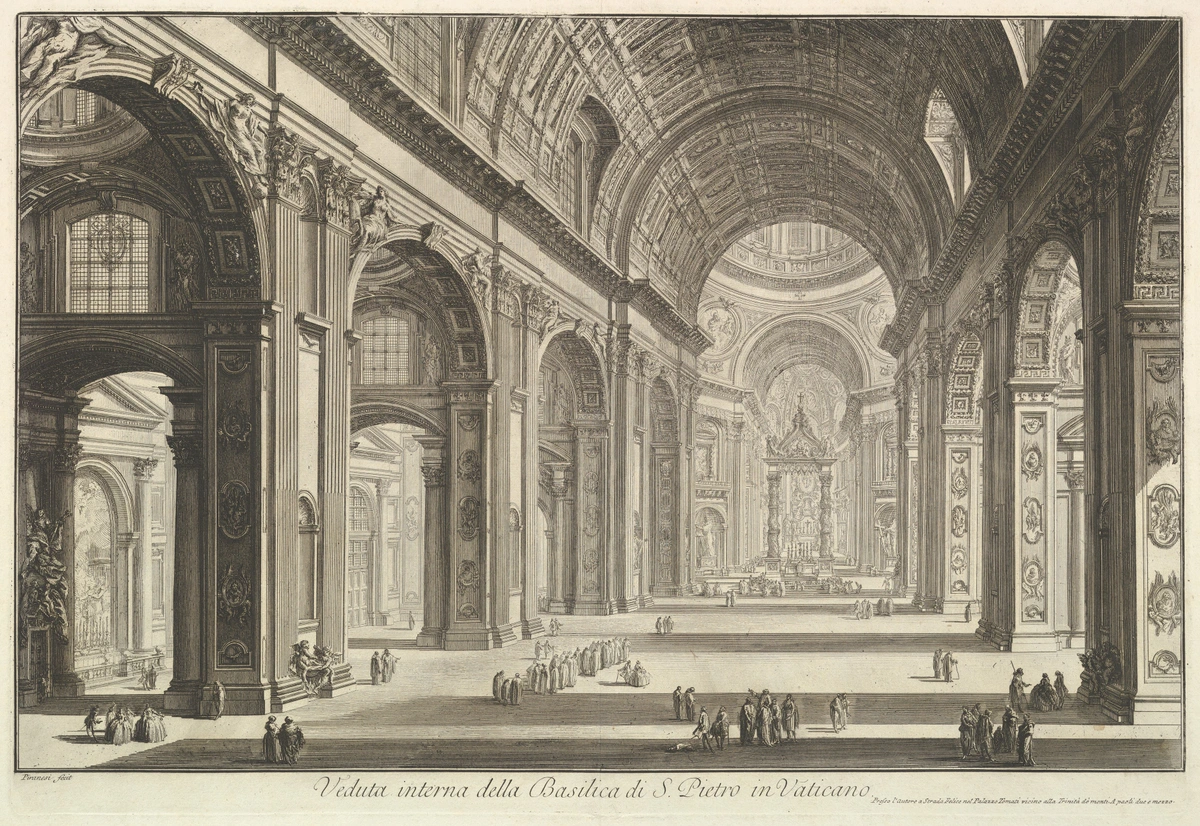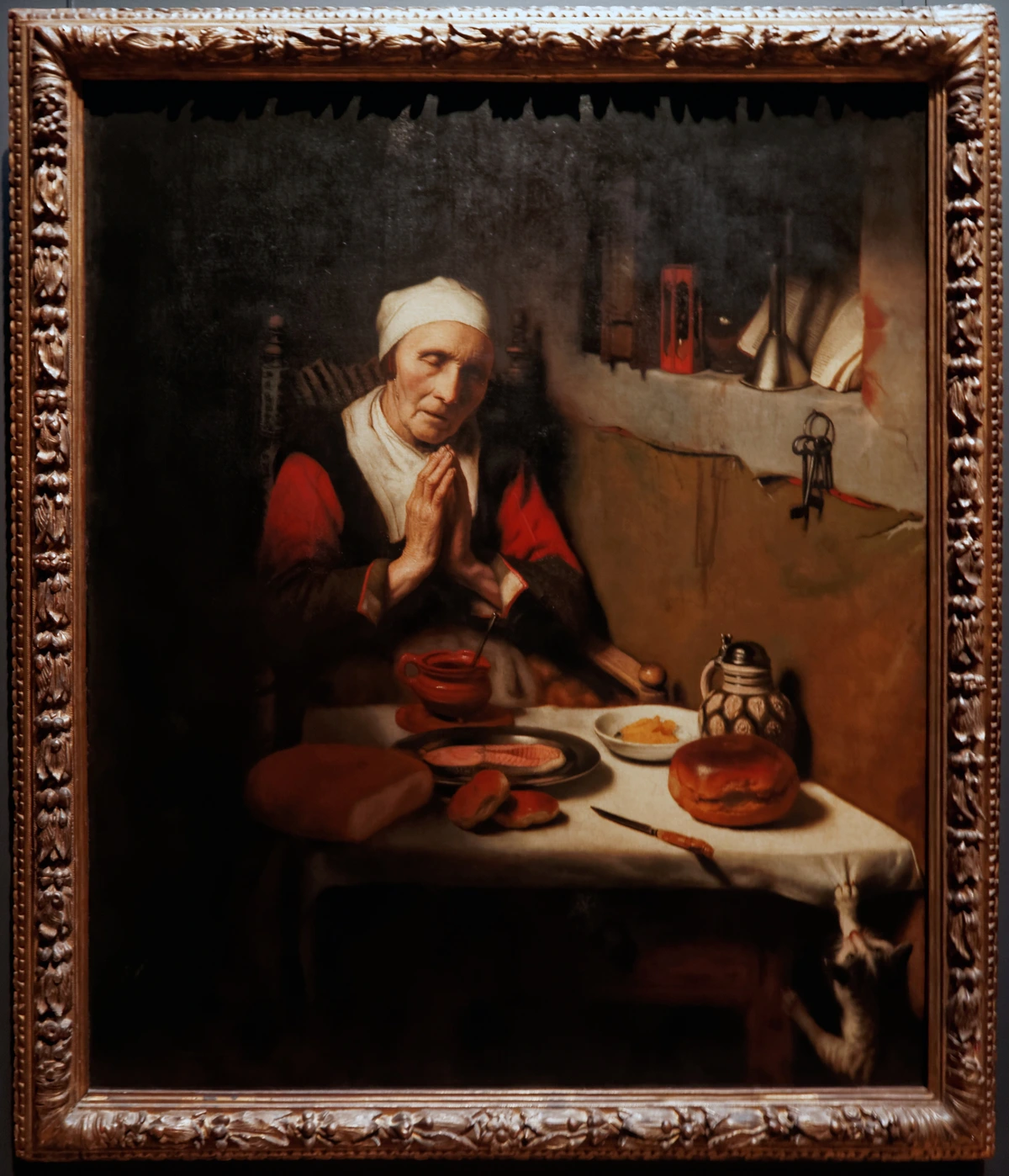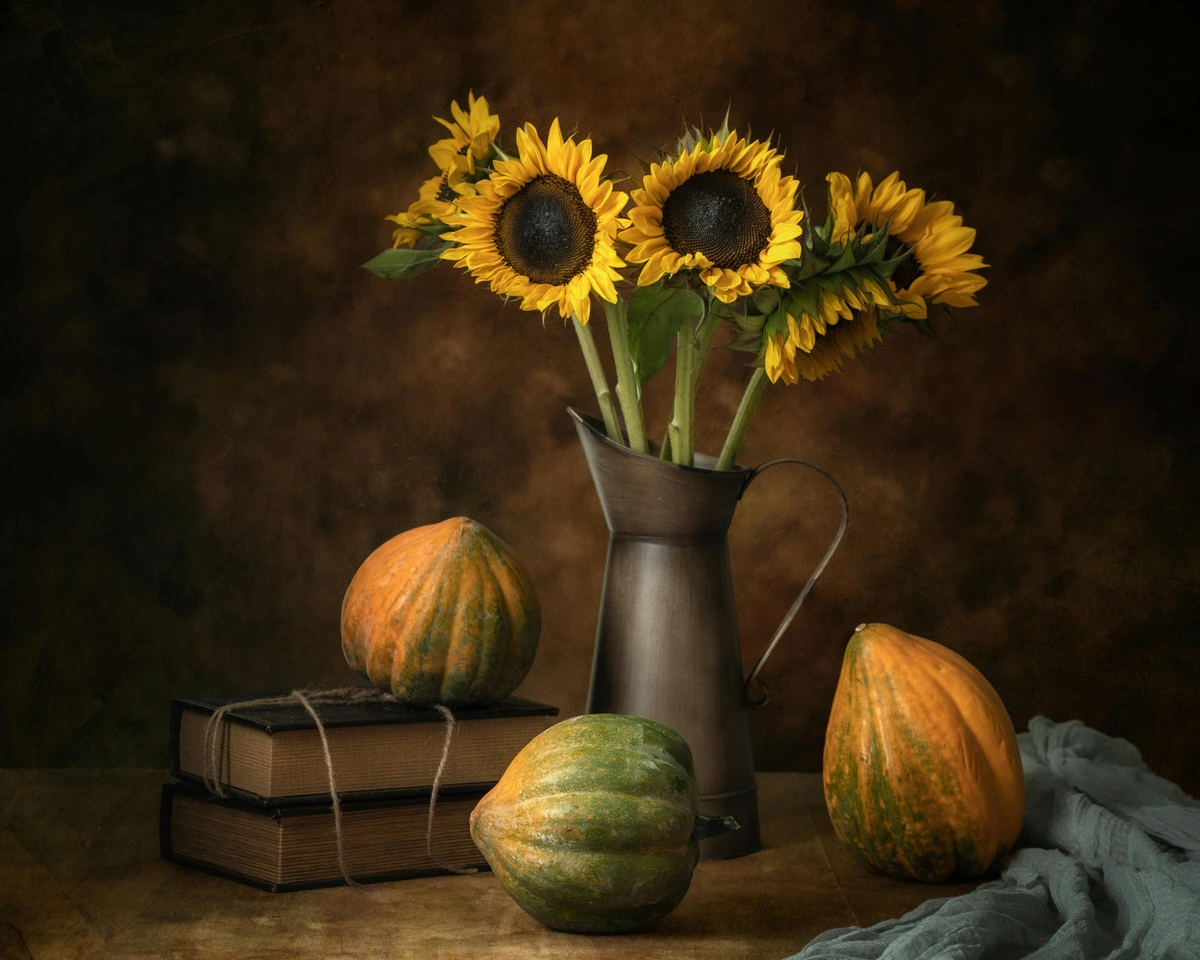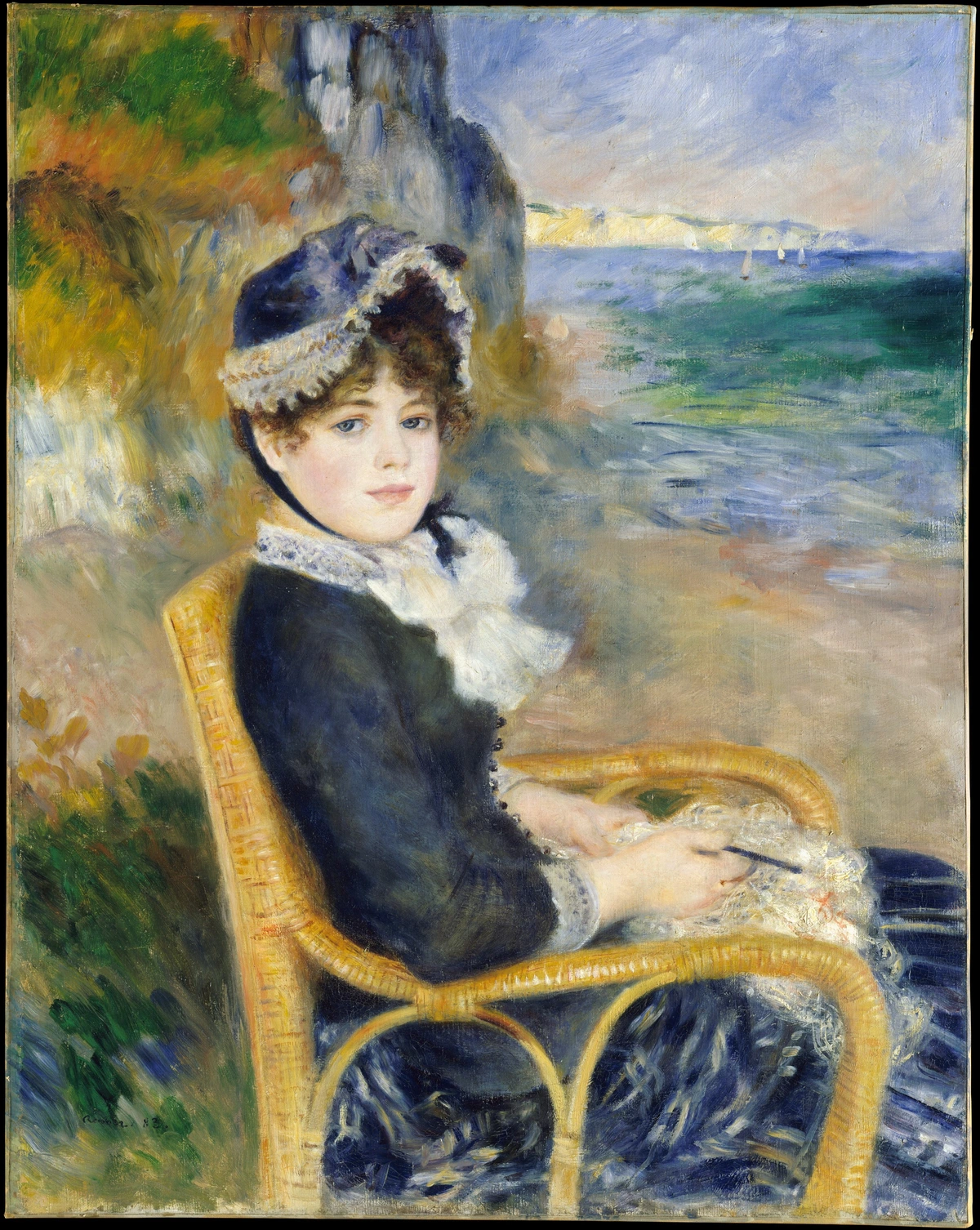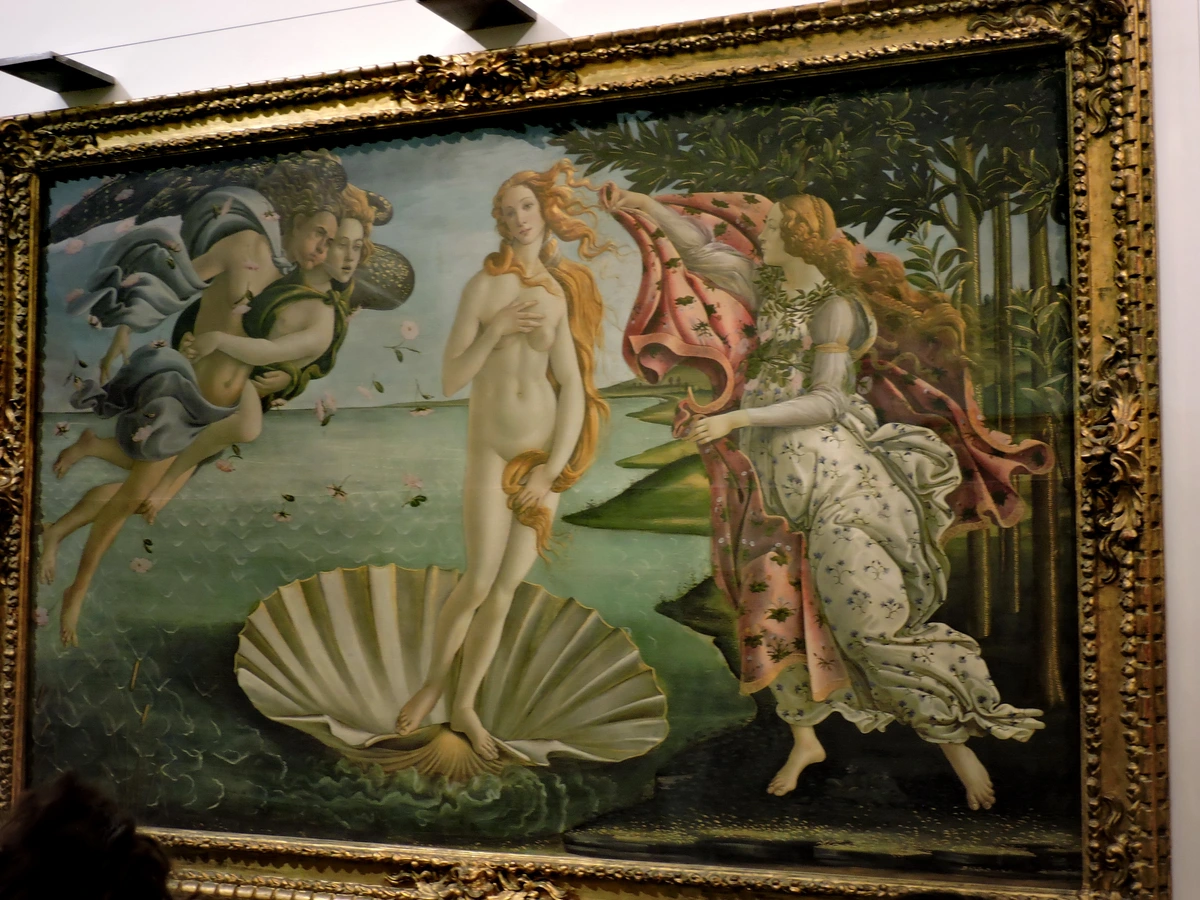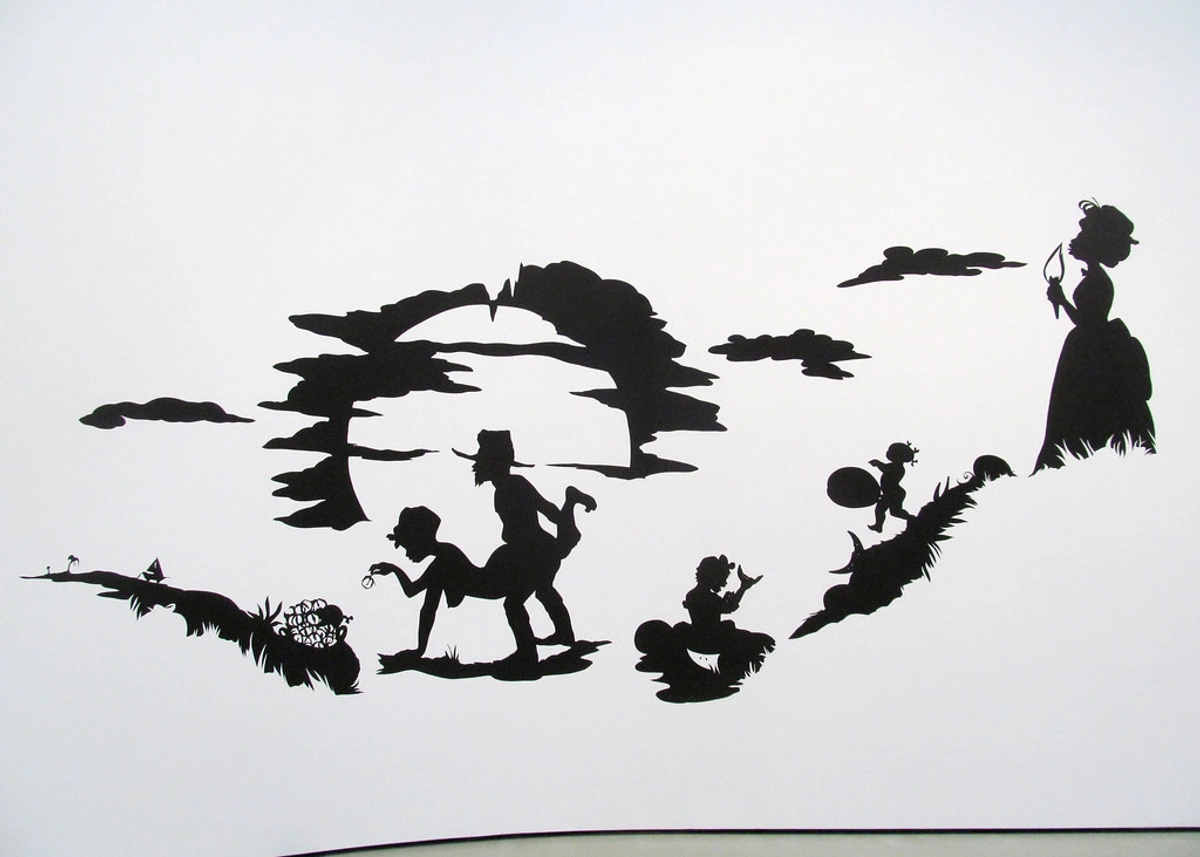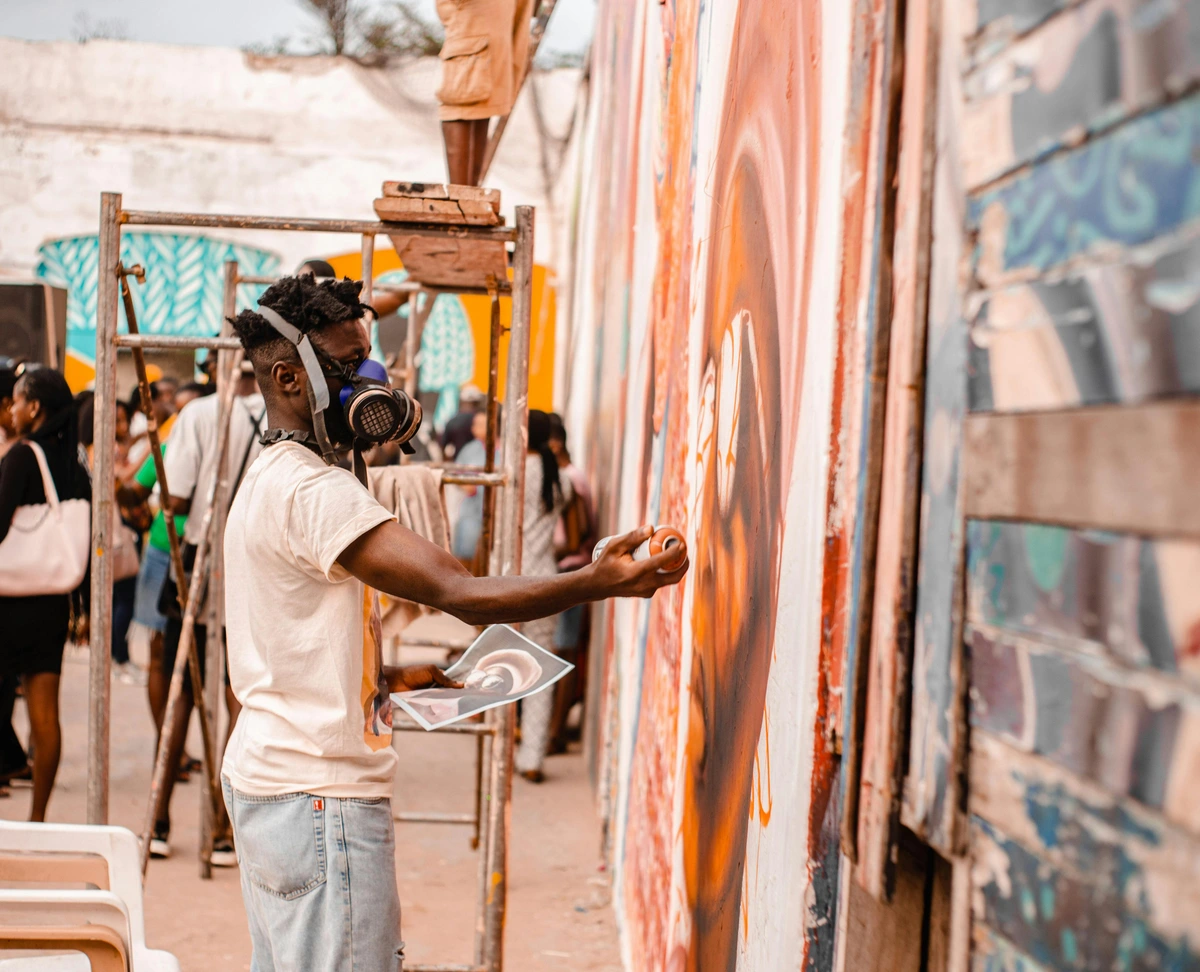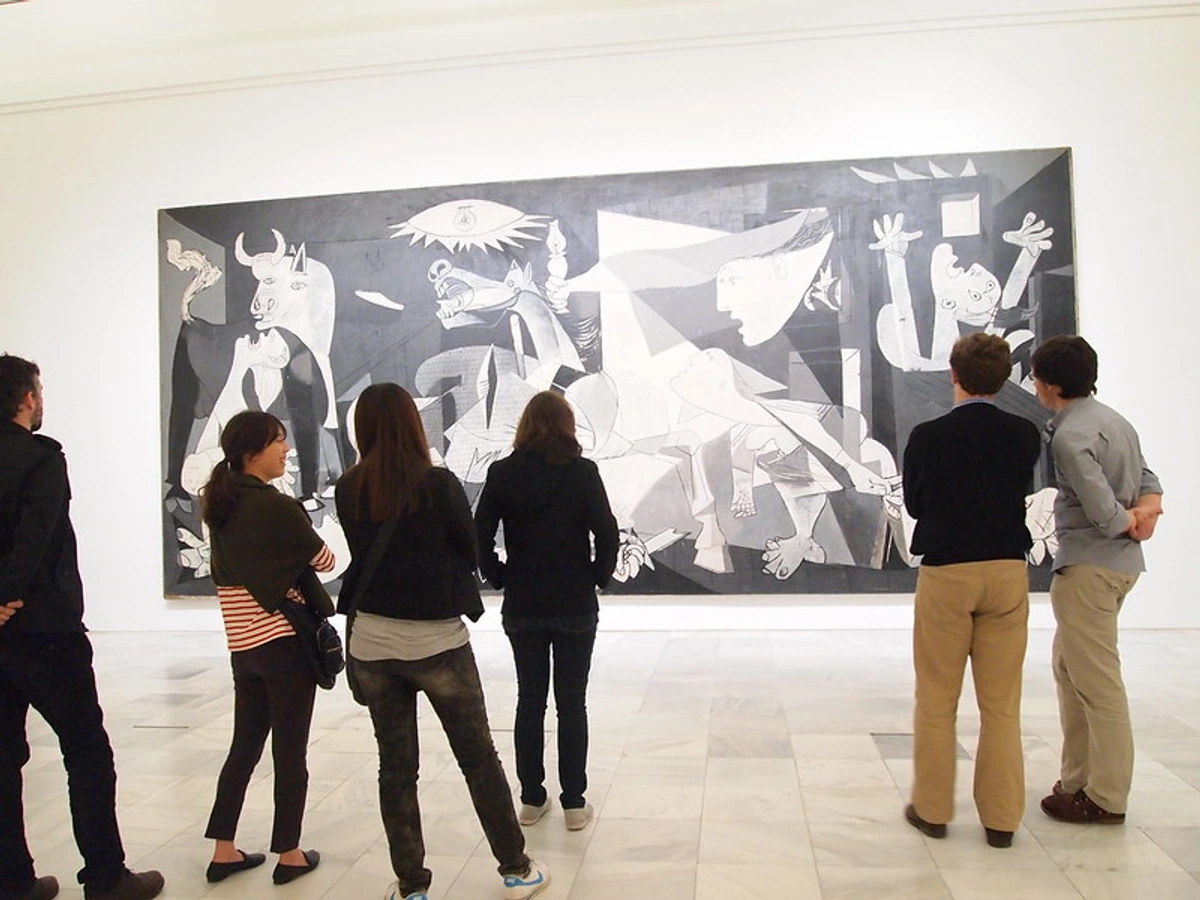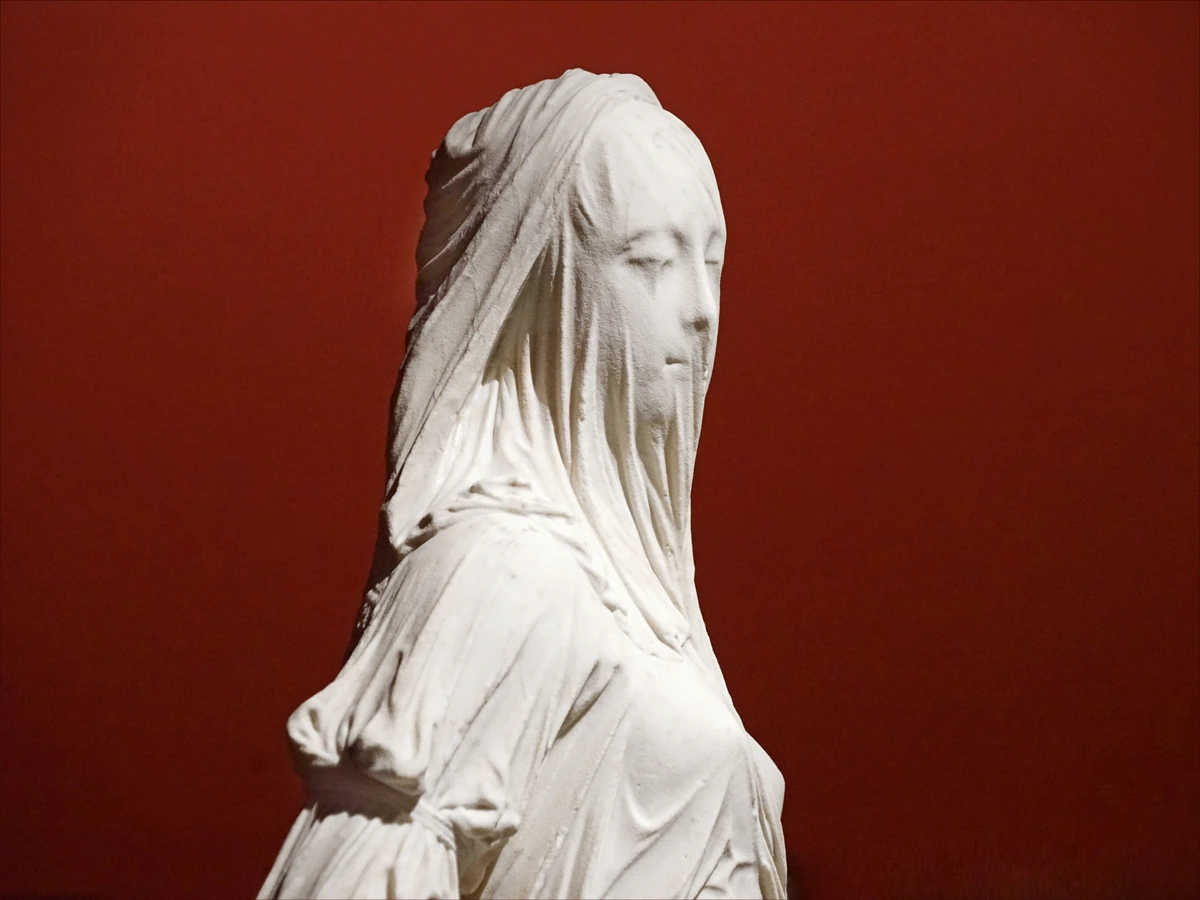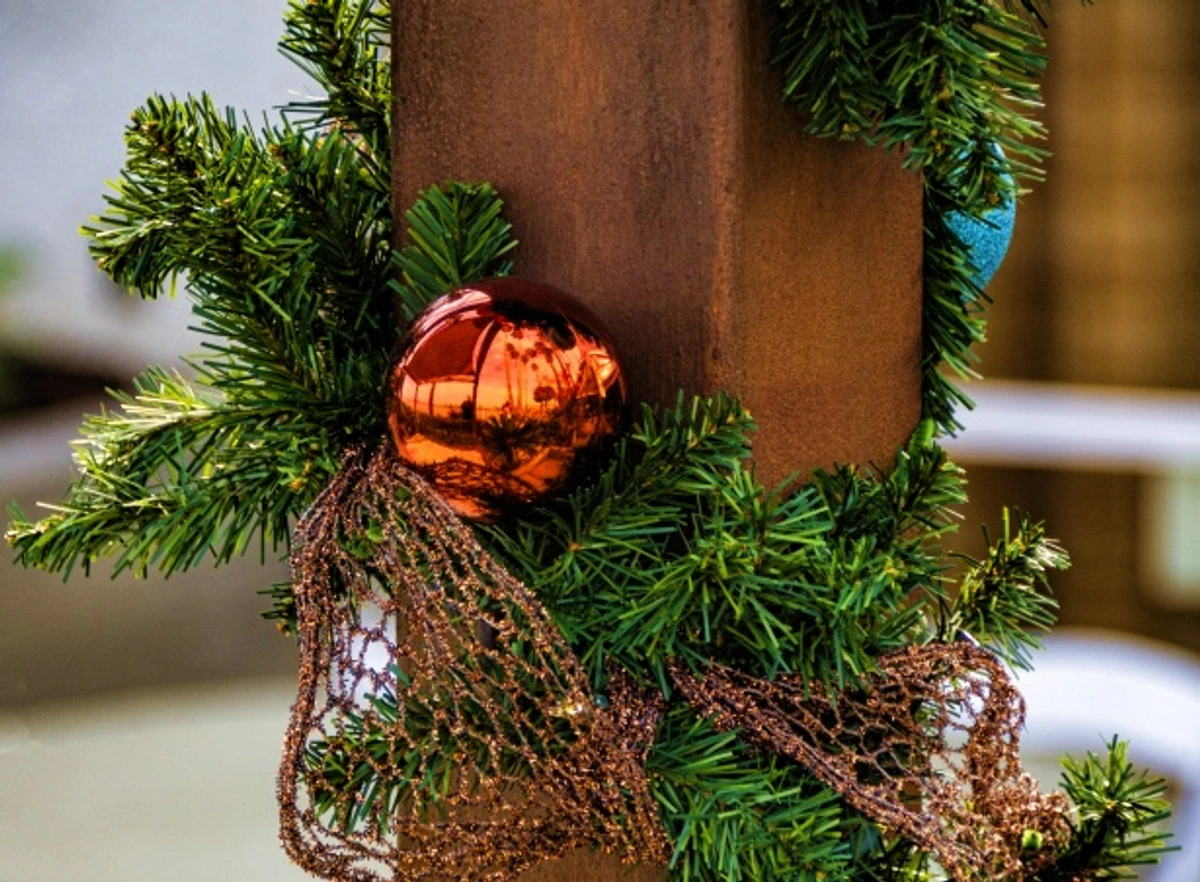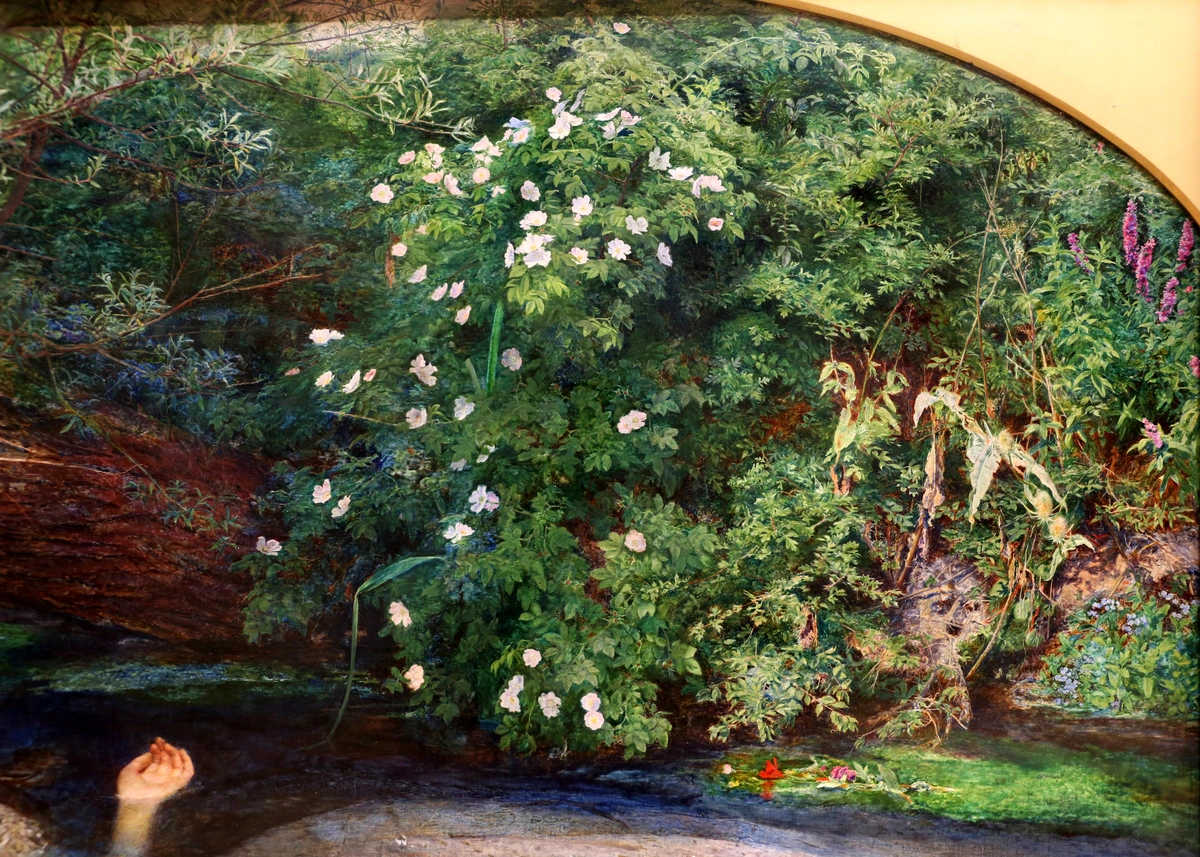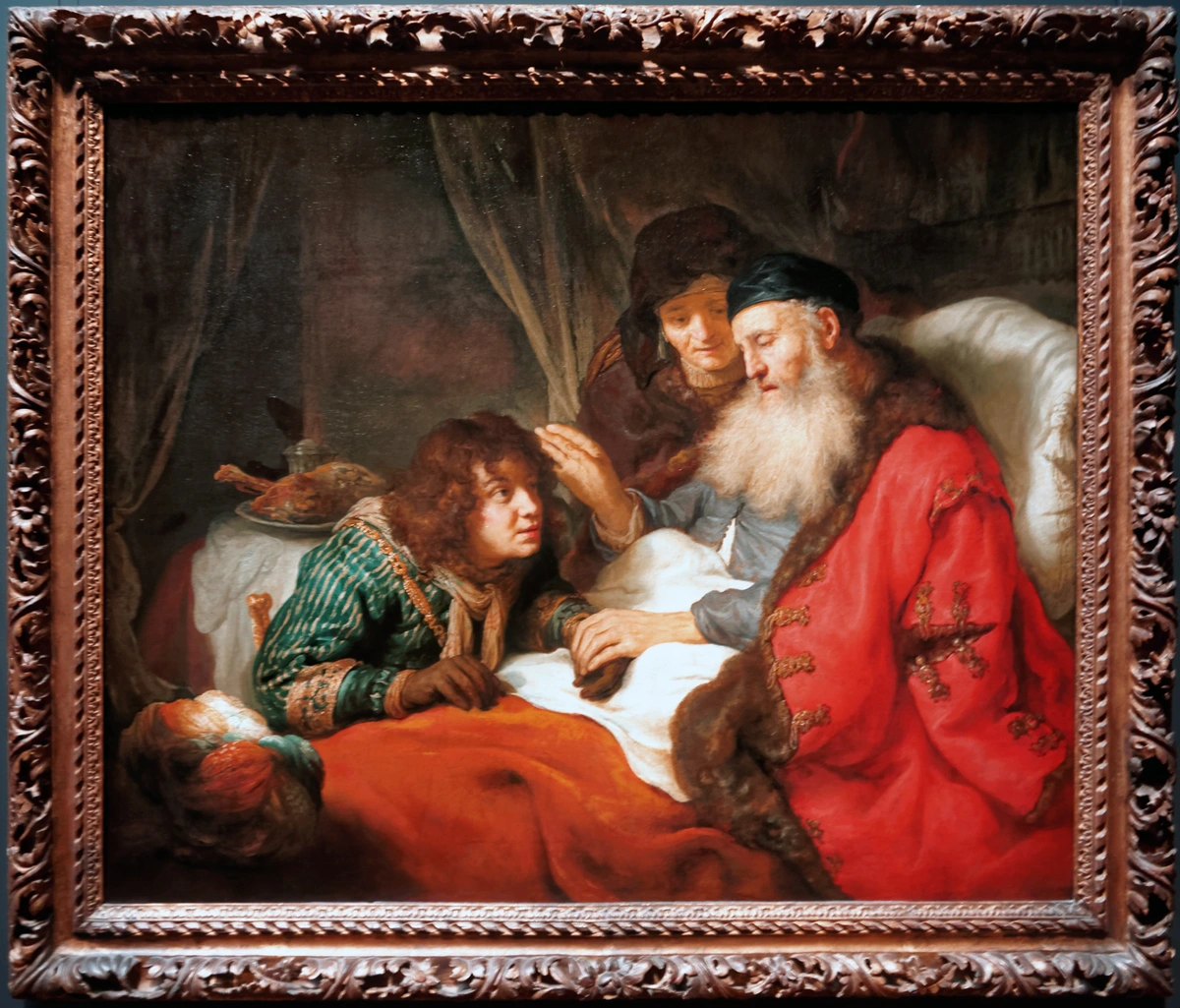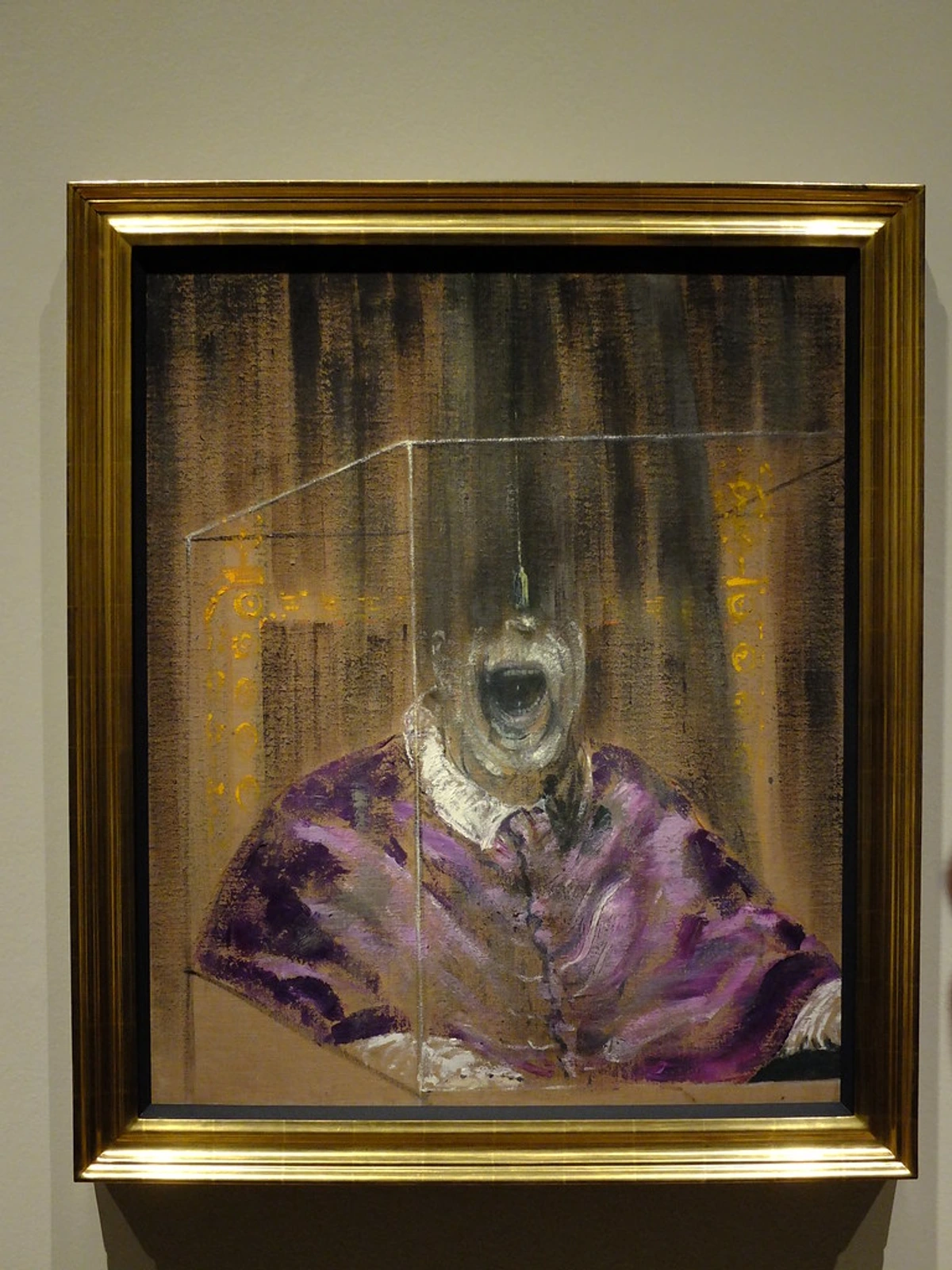
Unlocking the Secrets: A Deep Dive into Symbolism in Jan van Eyck's Arnolfini Portrait
Join me on a fascinating journey to unravel the intricate layers of symbolism hidden within Jan van Eyck's iconic Arnolfini Portrait. Discover how every detail, from the dog to the single candle, tells a story.
Unlocking the Secrets: A Deep Dive into Symbolism in Jan van Eyck's Arnolfini Portrait
Isn't it incredible how certain masterpieces don't just hang on a wall, but rather, demand an entire conversation with you? They pull you into their depths, hinting at stories far beyond the surface. For me, Jan van Eyck’s Arnolfini Portrait is absolutely one of those. Every time I study a high-resolution image, I uncover a new nuance, a tiny brushstroke, or a subtle glint that makes me wonder, 'What profound narrative did he truly intend for us to decipher?' It’s a painting that feels less like a static image and more like an open book, if only you knew the intricate language it was written in. What a clever trick, right? As an artist deeply immersed in visual communication, I can tell you van Eyck’s deliberate placement of every element wasn’t just for aesthetics; it was a profound act of storytelling, a masterclass in embedding rich narrative into what appears, at first glance, to be a mundane domestic scene.
Exploring a painting like this isn’t just about art history for me; it’s about understanding how people communicated, how they perceived their world, and how they embedded meaning into everyday objects centuries ago. It’s a bit like being a detective, meticulously piecing together clues to understand a story that's both deeply personal and universally resonant. And frankly, who doesn't love a good mystery, especially when it involves unraveling secrets nearly six centuries old? This particular painting has captivated scholars and art lovers for ages, precisely because it offers a seemingly simple domestic scene that, on closer inspection, unravels into a complex web of symbolism, social commentary, and even profound legal implications. It’s truly a microcosm of 15th-century life, but with layers of meaning that feel surprisingly contemporary in their complexity. Think of it as a meticulously coded message from the past, waiting for us to decipher its enduring secrets.
Are you ready to dive in and decode some of its profound messages with me? I promise, by the end of this journey, you’ll not only appreciate van Eyck’s genius on a new level but also gain a deeper understanding of how art functions as a rich, layered language across time, and how much a single image can tell us about an entire era. This is a journey into the very heart of the Northern Renaissance, an era brimming with innovation, profound symbolic expression, and an artistic mastery that still feels almost magical. Our goal? To make this the ultimate, most comprehensive guide to this masterpiece, leaving no brushstroke, no glint, and no hidden meaning unturned.
Some artworks just demand your attention, don't they? They pull you in with their sheer detail and that nagging feeling that there's so much more to them than meets the eye. For me, Jan van Eyck's Arnolfini Portrait is absolutely one of those. Every time I gaze at a high-resolution image, I find myself discovering a new nuance, a tiny brushstroke, or a subtle glint that makes me wonder, 'What did he really want us to see?' It’s a painting that feels less like a static image and more like an open book, if only you knew the language it was written in. What a clever trick, right? As an artist deeply immersed in visual communication, I can tell you van Eyck's deliberate placement of every element wasn't just for aesthetics; it was a profound act of storytelling, a masterclass in embedding narrative into the mundane.
Exploring a painting like this isn't just about art history for me; it's about understanding how people communicated, how they saw their world, and how they embedded meaning into everyday objects centuries ago. It’s a bit like being a detective, piecing together clues to understand a story that's both deeply personal and universally resonant. And frankly, who doesn't love a good mystery? This particular painting has captivated scholars and art lovers for centuries, precisely because it offers a seemingly simple domestic scene that, on closer inspection, unravels into a complex web of symbolism, social commentary, and even legal implications. It's truly a microcosm of 15th-century life, but with layers of meaning that feel surprisingly contemporary in their complexity. Think of it as a meticulously coded message from the past, waiting for us to decipher its secrets.
Ready to dive in and decode some of its enduring secrets with me? I promise, by the end of this journey, you’ll not only appreciate van Eyck’s genius on a new level but also gain a deeper understanding of how art functions as a rich, layered language across time, and how much a single image can tell us about an entire era. This is a journey into the heart of the Northern Renaissance, an era brimming with innovation, profound symbolic expression, and an artistic mastery that still feels almost magical. Our goal? To make this the ultimate, most comprehensive guide to this masterpiece, leaving no brushstroke unturned.
The Master of Light and Detail: Jan van Eyck's Enduring Legacy
Before we immerse ourselves fully in the Arnolfini Portrait's intricate tapestry of meaning, it's vital to appreciate the artist behind the brush. Honestly, for me, Jan van Eyck wasn't just a painter; he was a visionary, a pioneer who, alongside his brother Hubert (and perhaps with a little bit of alchemical genius, as legends sometimes whisper), irrevocably transformed the trajectory of Western art. His mastery of oil painting wasn't merely a technical skill; it was a revolutionary leap that allowed for an unprecedented level of detail, luminous color, and a sense of tangible reality that still astounds viewers today. Imagine, for a moment, a world where paintings were typically rendered in tempera – a fast-drying, egg-based medium offering flat, somewhat opaque surfaces, often lacking the vibrant depth and subtle transitions we now take for granted. Then, van Eyck comes along with his glazes, creating depths of color and light that seemed to pulse with life, almost breathing – it must have been nothing short of miraculous for his contemporaries. There's even a whisper of legend that he, perhaps with his brother Hubert, was a true alchemist of pigment, forever changing the medium. He didn't just depict reality; he intensified it, inviting us to look closer, to truly see, almost as if he was gifting his viewers a new pair of eyes, guiding them to witness the world with unprecedented clarity. This meticulous approach, a hallmark of Early Netherlandish painting, often referred to as Ars Nova (a new art, indeed!), set the stage for the rich symbolic language he would so expertly weave into every fabric, every glint, every shadow of the Arnolfini Portrait. His influence reverberated across Europe, impacting generations of artists and cementing his status as one of art history's true giants. Without his pioneering spirit and unmatched skill, the Arnolfini Portrait as we know it, with its breathtaking realism and profound layers of meaning, simply wouldn't exist. It's truly a testament to how one artist can utterly redefine an entire medium, turning pigments into profound narratives.
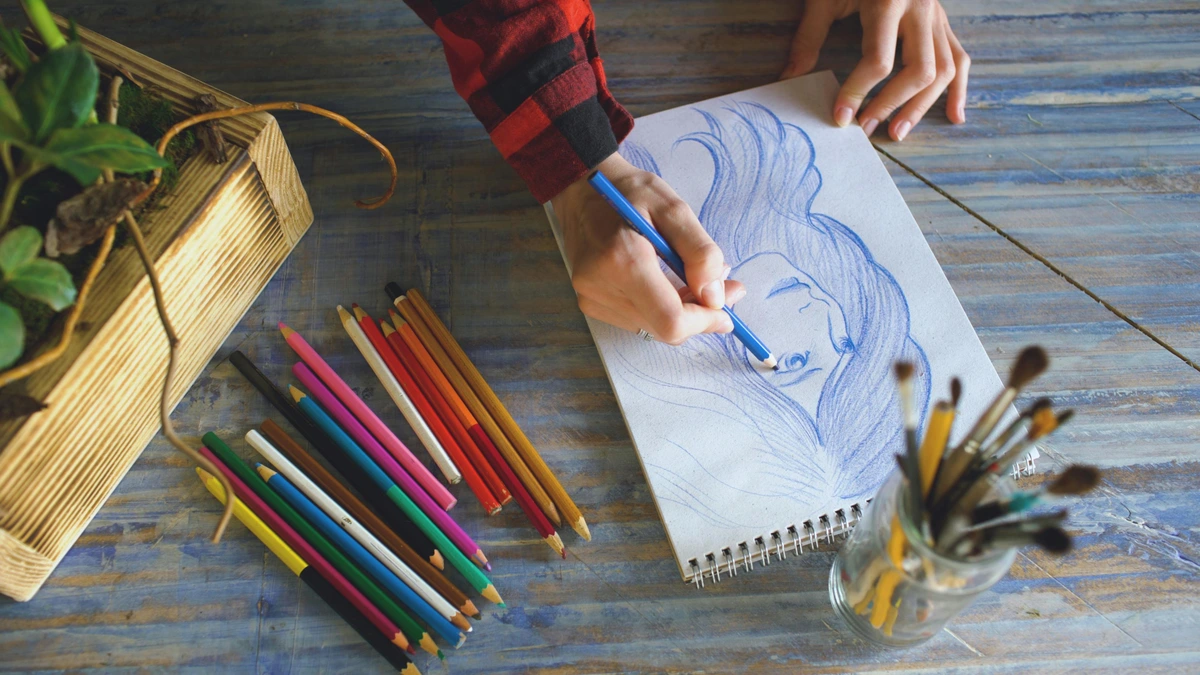
His innovative use of oil also allowed for incredibly fine brushwork, creating almost imperceptible transitions between colors and tones. While sfumato is a term more commonly associated with Leonardo da Vinci, describing a soft, hazy quality that blurs outlines, van Eyck achieved similar subtle blends, often through his masterful layering of translucent glazes, which built up color and light with unprecedented luminosity. This sophisticated layering allowed him to render textures – the rough wool, the soft fur, the metallic gleam of the chandelier – with an almost tactile fidelity that was revolutionary. It’s a testament to his keen eye and steady hand, demonstrating how technical mastery can truly elevate narrative and symbolic depth. If you want to dive deeper into the science behind some of these artistic innovations, I've found that exploring the intricacies of /finder/page/mastering-glazing-techniques-in-oil-painting can be quite illuminating, offering a window into the technical brilliance behind his luminous effects.
The Historical and Cultural Canvas: 15th-Century Bruges
Before we dive headfirst into the painting itself, it's crucial to set the scene. Imagine Bruges in 1434: a bustling, prosperous hub of international trade in the heart of the Burgundian Netherlands. This wasn't just any city; it was a veritable metropolis, a true melting pot of cultures, merchants, and incredible wealth, making it an extraordinarily fertile ground for artistic innovation. The powerful Dukes of Burgundy were renowned patrons of the arts, fostering an environment where artists like Jan van Eyck could truly flourish, experiment, and push the very boundaries of painting. This vibrant economic and cultural milieu profoundly shaped the very fabric of the Arnolfini Portrait, directly influencing its themes of wealth, social status, and the intricate, deeply embedded symbolism we're about to uncover. Understanding this rich backdrop is like getting a backstage pass to the 15th century, revealing not just what we see, but why such a detailed and meaningful work would emerge from this particular time and place. It was an era when art was intertwined with commerce, religion, and social hierarchy, a visual testament to a society in flux and flourishing.
The city's strategic location, its navigable canals, and its established merchant guilds made it a nexus for goods and ideas from across Europe and beyond. We're talking about everything from luxurious Flemish tapestries and fine wool to exotic spices and precious silks flowing through its arteries, making Bruges a veritable economic powerhouse. This mercantile prowess wasn't just about money; it fostered a pragmatic, detail-oriented culture that found its perfect artistic expression in van Eyck's hyper-realism. The burgeoning merchant class, including the Arnolfini family, rose to unprecedented power, becoming influential patrons. They commissioned artworks not just for religious devotion but also for social display and even as quasi-legal documents – a fascinating blend of the sacred and the secular. Their sophisticated homes, often showcasing precious imported goods and exquisitely crafted furniture, served as both private residences and public declarations of their prosperity, much like a carefully curated gallery of their achievements, reflecting their global reach. For a deeper look into the broader artistic currents that shaped this period, particularly the distinct characteristics that set it apart, you might find /finder/page/ultimate-guide-to-renaissance-art and /finder/page/definitive-guide-to-art-history-eras incredibly insightful, offering a fascinating contrast to the developments in Italy during the same period.
What Exactly Is the Arnolfini Portrait?
First things first, let's get our bearings and truly grasp the monumental significance of this work. The Arnolfini Portrait, sometimes referred to as 'The Arnolfini Marriage' or 'The Arnolfini Betrothal,' is a 1434 oil painting by the Early Netherlandish master Jan van Eyck. It depicts Giovanni di Nicolao Arnolfini, an incredibly wealthy Italian merchant from Lucca who had settled in Bruges, and his wife, Giovanna Cenami (though, as we'll delve into in just a moment, the precise identity of the woman and the exact nature of their relationship remain subjects of intense, captivating scholarly debate). On the surface, it’s a double portrait, a seemingly straightforward depiction of two individuals. But beneath that, it’s an absolute masterclass in symbolism, making it one of the most discussed and analyzed paintings of the entire Northern Renaissance. The Arnolfini family, prominent and incredibly influential merchants from Lucca, Italy, had significant dealings and vast trade networks stretching across Europe, even maintaining close ties with the powerful Medici banking family. Their established presence in Bruges, a bustling economic hub, speaks volumes about the city's international importance as a European trade nexus, a true commercial powerhouse. This portrait, then, is far from merely a record of individuals; it's a richly layered window into the interconnected worlds of commerce, social standing, deeply held religious beliefs, and even the nascent legal practices of 15th-century Europe. It’s a testament to the fact that art, even then, was so much more than just pretty pictures; it was a potent form of communication, documentation, and aspirational display, reflecting the values and complexities of an entire era. For me, it's like a finely woven tapestry, where every thread tells a part of the story.
The ongoing scholarly debate about whether the painting depicts a wedding, a formal betrothal, or even a poignant memorial portrait for a deceased first wife, only adds to its allure and intellectual depth. For instance, the theory that the woman might be Giovanni's first wife, Costanza Trenta, who died in 1433, suggests the painting could be a posthumous tribute, with certain symbolic elements supporting this interpretation, such as the single lit candle often interpreted as a soul departed. What's undeniably clear is that van Eyck intended for this painting to be far more than just a likeness; it was a profound statement, a meticulously detailed record, and a deeply meaningful tableau designed to convey specific messages to its contemporary viewers. This enduring ambiguity, however, has fueled centuries of fascinating art historical inquiry, and honestly, that's part of why it's so compelling. It invites us to be detectives, poring over every pixel, searching for definitive clues, much like a modern forensic analyst examining a crime scene, but with the rich, layered evidence of paint and canvas.

Van Eyck was a true revolutionary, pushing the boundaries of oil painting with incredible skill. He didn't just paint; he engineered, utilizing revolutionary techniques like meticulous layering and glazing – applying multiple thin, translucent layers of oil paint – to achieve incredible luminosity, unparalleled depth, and rich, saturated color that seemed to glow from within, rather than merely sit on the surface. This wasn't just about technical prowess; it was about creating a new visual language, allowing him to embed intricate narratives within every brushstroke, making even the smallest details sing with meaning. His mastery of light, for instance, is phenomenal, capturing its play on different surfaces from the sheen of the chandelier to the texture of the fabrics, and revealing forms with a clarity that was previously unimaginable, effectively transforming the two-dimensional canvas into a vibrant, living space. He also meticulously employed chiaroscuro – the dramatic interplay of light and shadow – and a nascent understanding of atmospheric perspective, making his interiors feel astonishingly real and expansive. If you're keen to explore the broader context of art from this period, particularly how the Northern Renaissance diverged from its Italian counterpart, I've found the /finder/page/ultimate-guide-to-renaissance-art to be a fantastic starting point for understanding how this era shaped artistic expression, particularly in the Northern Renaissance, with its unique emphasis on minute detail and everyday realism. For those intrigued by the broader art historical currents, exploring /finder/page/definitive-guide-to-art-history-eras can offer even more context on this transformative period, highlighting the distinct artistic innovations that emerged from both regions.
This emphasis on everyday objects carrying profound meaning is a hallmark of the Northern Renaissance, transforming even the most humble items into carriers of deep theological and moral messages. It’s a distinctive characteristic that sets this period apart, inviting us to look beyond mere representation to a richer, more complex narrative.
The Language of Objects: Why Every Detail Matters
The Language of Objects: Why Every Detail Matters - Decoding Van Eyck's Visual Code
For me, one of the most profoundly fascinating aspects of Northern Renaissance art, and particularly van Eyck’s work, is this almost obsessive, painstaking attention to detail. It wasn't just for show, not merely a display of technical virtuosity; every object, every gesture, every tiny element was often imbued with layers of profound meaning. For a 15th-century viewer, these symbols would have been readily understood, almost like reading a visual code woven into the very fabric of their daily lives. For us, centuries removed, it requires a little more digging, a bit like trying to understand an old diary written in a forgotten shorthand. But that's part of the fun, isn't it? The thrill of discovery is truly unmatched! In Northern Renaissance art, unlike its Italian counterpart which often leaned on classical allegory, mythological themes, and grand narratives, symbolism was frequently embedded in everyday objects and domestic scenes, transforming the seemingly mundane into a canvas for profound spiritual and moral messages. This ingenious approach made the mundane sacred and revealed a world rich with moral and religious instruction, often subtly interwoven. It's a powerful testament to a time when art was less about mere aesthetics and more about conveying profound messages, often with a sophisticated blend of the secular and the divine, acting as a visual sermon or a moral compass. To truly grasp the breadth of this artistic language, exploring /finder/page/the-definitive-guide-to-understanding-symbolism-in-art can provide a deeper foundation, helping you navigate these fascinating visual narratives.
It makes me think about how we communicate meaning today. We might use emojis, or specific cultural references, but imagine a world where your furniture, your clothing, even the fruit on your table, all carried layers of shared cultural and religious significance. That's the world van Eyck was painting into, and it's why every detail in the Arnolfini Portrait is a meticulously chosen word in a larger, visual sentence, each contributing to a grand, silent narrative.
Let's break down some of the most compelling symbolic elements that van Eyck so cleverly embedded into this domestic scene, transforming it into a visual poem of marriage and faith.
Let's break down some of the most compelling symbolic elements that van Eyck so cleverly embedded into this domestic scene, transforming it into a visual poem of marriage and faith.
The Loyal Companion: That Adorable Dog
The Loyal Companion: That Adorable Dog
Right there at the couple's feet, a small, shaggy dog gazes out at us with an almost knowing expression. Now, dogs in portraits from this period almost invariably symbolize fidelity and loyalty, particularly in the context of marriage. I mean, who better to represent unwavering devotion than a faithful canine companion? This particular breed, likely a Brussels Griffon or similar small lap dog, was not just a pet; it was a common status symbol of the wealthy, a valuable possession denoting luxury and leisure. But its presence here transcends mere luxury. It speaks volumes about the virtues expected and desired within a marital bond—unconditional fidelity, steadfast loyalty, and devoted love. It’s a simple touch, yet powerfully effective in conveying a core message of their union, and a recurring motif in Renaissance art to denote faithfulness and companionship. The fact that it's a specific, recognizable (and rather expensive to acquire!) breed further underscores the couple's status, subtly blending the secular display of wealth with the sacred message of fidelity. These little companions were often bred specifically for their charming temperaments and distinctive looks, making them highly sought after by the affluent merchant class. If you're curious about how other animals carried symbolic weight across various artistic traditions, you might enjoy diving into /finder/page/understanding-the-symbolism-of-animals-in-art-history for a much broader perspective, or even exploring /finder/page/the-symbolism-of-animals-in-renaissance-art to see how these ancient meanings resonate today. It's truly a timeless symbol of devotion, isn't it?
The All-Seeing Eye: The Convex Mirror
This, for me, is where van Eyck truly shines as a genius, pushing the boundaries of what painting could achieve, anticipating techniques that wouldn't become widespread for centuries. On the back wall, above Giovanni Arnolfini’s hand, hangs a convex mirror. It’s not just a decorative element; it's a window into another dimension of the painting, a whole other reality unfolding before our eyes. In its incredible reflection, we see the backs of the couple and, crucially, two other figures standing in the doorway – these are often interpreted as witnesses. One of these figures is very likely van Eyck himself! Above the mirror, he boldly signed and dated the painting: 'Johannes de Eyck fuit hic 1434' (Jan van Eyck was here 1434). This isn't just a signature; it's an explicit, almost audacious, claim of presence, transforming the painting into a sworn testimony, much like a notary signing a legal document. By placing himself—and another figure—within the reflected space, van Eyck transforms the painting from a mere portrait into a quasi-legal record, a notarized testament to a significant event, a concept truly revolutionary for its time. This ingenious device not only adds incredible depth, spatial complexity, and narrative intrigue, creating a 'painting within a painting,' a kind of ars nova meta-commentary, but also highlights his unparalleled mastery of /finder/page/definitive-guide-to-perspective-in-art and optical effects, a true hallmark of his technical brilliance. It's a meta-narrative, inviting us to consider the act of seeing and witnessing, and even the role of the artist in recording history. It's a remarkable feat of visual engineering, challenging the viewer's perception and blurring the lines between artifice and reality. How cool is that – the artist literally putting himself in the frame as a witness, giving this intimate moment an almost public validation!
The Mirror's Holy Border: Scenes from the Passion
The Mirror's Holy Border: Scenes from the Passion - A Divine Witness
But wait, there's even more to that mirror – a detail that truly elevates it beyond mere cleverness! Look closely at the small medallions adorning its frame. These are tiny, exquisitely painted scenes from the Passion of Christ. These ten miniature roundels, executed with breathtaking detail that often requires a magnifying glass to truly appreciate, depict specific moments from the Passion, including the Agony in the Garden, the Last Supper, the Betrayal, the Flagellation, the Road to Calvary, the Crucifixion, the Deposition, and the Resurrection. These aren't just decorative flourishes; they silently witness the earthly event unfolding below, casting a divine gaze upon the couple, suggesting a spiritual benediction upon their union. This inclusion profoundly elevates the religious significance of the entire scene, reminding the viewer that even in the most intimate domestic setting, God's watchful eye and the overarching narrative of Christ's sacrifice are ever-present. It’s a powerful juxtaposition of the mundane and the divine, transforming the mirror's frame into a sacred border around a pivotal earthly moment, suggesting that their vows are made under the highest spiritual authority and are witnessed by both man and God. Honestly, it’s details like these that just blow my mind – how much profound narrative and theological weight he packed into such a small, almost hidden, space! It's as if van Eyck is reminding us that every human act, especially one as sacred as marriage, occurs within a grand, divine narrative, overseen by the very story of salvation and the path to redemption.
The Single Flame: A Beacon of Presence
Look closely at the elaborate brass chandelier hanging from the ceiling. One single candle is lit, even though it's daytime. ### The Single Flame: A Beacon of Divine Presence
Look closely at the elaborate brass chandelier hanging from the ceiling. One single candle is lit, even though it's daytime. This single flame, burning brightly even in broad daylight, is a traditional marriage candle—a common practice in betrothal and wedding ceremonies of the time, often lit during the recitation of vows. It symbolizes several intertwined concepts: the presence of Christ as a divine witness, the all-seeing eye of God blessing the couple and illuminating their vows with divine grace, and sometimes even the ephemeral nature of life itself, or the permanent, unwavering light of faith. Indeed, many scholars suggest it represents a symbolic 'third witness' to the vows being exchanged, alongside the reflected figures and van Eyck's signature, elevating the private act to a publicly (and divinely) observed one. In 15th-century Flanders, such a lit candle was a potent and multifaceted religious symbol, underscoring that this seemingly private domestic scene is, in fact, a deeply spiritual and consecrated one, where earthly and divine commitments converge. It's a small detail, but one that radiates immense spiritual weight, tying the human act of marriage to divine sanction and reminding us that even the most intimate moments are under the gaze of the divine, a beautiful convergence of the temporal and the eternal.
Shoes Off, Sacred Ground
Shoes Off, Sacred Ground
Notice the wooden clogs kicked off by Giovanni Arnolfini in the foreground and the lady’s distinctive red shoes placed neatly near the bed. This deliberate act of removing shoes is a profound symbolic gesture, signifying that they are standing on holy ground or that the space itself is sacred. It's a direct echo of biblical narratives, such as Moses at the burning bush (Exodus 3:5) or Joshua before Jericho (Joshua 5:15), where a sacred encounter demanded such reverence and humility. This gesture powerfully implies the gravity and sanctity of the event taking place, be it a marriage, a betrothal, or simply a deeply respected domestic space where a solemn, binding vow is being made. Beyond biblical allusions, the removal of shoes was a common cultural practice across many traditions to denote respect, humility, and the recognition of entering a sacred or consecrated space. It’s a powerful, silent statement, asserting the spiritual weight and consecration of this seemingly private, yet utterly pivotal, moment. The placement of their footwear, so deliberately cast aside, underscores the idea that this domestic chamber is momentarily transformed into a consecrated space for a sacred covenant, a beautiful blend of the everyday and the divine, reminding us of the profound respect due to such a solemn occasion.
The Fruit of Life: Oranges on the Sill
The Fruit of Life: Oranges on the Sill
On the windowsill and chest, we see carefully placed oranges. In 15th-century Bruges, oranges were not everyday produce; they were an exotic luxury, expensive and painstakingly imported from warmer Mediterranean climates. So, they immediately convey the couple's immense wealth and high status, a clear visual flex of their economic power and sophisticated tastes. Beyond that, fruit, in general, often symbolizes fertility and abundance, hinting at the hope for a prosperous family and many heirs. Some scholars even link them specifically to the Garden of Eden, representing a state of innocence before the Fall, or even forbidden fruit, hinting at the potential for sin or the fragility of virtue within marriage and the need for redemption. In a broader sense, these costly imports, carefully placed within the domestic scene, can also serve as a subtle memento mori, a reminder of life's fleeting nature and the transient beauty of earthly possessions, prompting contemplation on enduring spiritual values alongside material wealth. The fact that they are fresh citrus in a Northern European climate also points to their freshness and vitality, subtly echoing the hope for a vibrant, thriving household. It’s truly a complex layer of meaning, isn’t it? How much profound symbolism can one orange hold?! It's a testament to van Eyck's ability to layer deep, multifaceted meanings into seemingly simple objects, a masterstroke of visual storytelling, a silent conversation between wealth, virtue, and mortality.
The Bridal Bed and Green Dress: Fertility and Wealth
The elaborate red bed and drapes in the background are certainly symbols of wealth and social standing. Red, a color often associated with passion and royalty, was a very expensive dye, likely madder or cochineal, dyes that were imported at great cost and represented the height of luxury, speaking volumes about the Arnolfini's economic power. As for the lady's voluminous green dress, green was widely associated with fertility, nature, and hope in the Renaissance period, a vibrant symbol of potential new life. While it's tempting to think she's pregnant (a common misconception, which we'll definitely address in the FAQ), the style of the dress, with its high waistband and ample folds, was simply the height of fashion for aristocratic women in the Burgundian Netherlands during the 15th century. It was designed to create a fuller silhouette, which subtly hinted at the potential for fertility and a desirable child-bearing figure, rather than an actual pregnancy. However, the color itself certainly reinforces themes of potential new life and prosperity, a subtle yet powerful aspiration within marriage. Beyond the green, the rich, deep red of the bed and drapes, achieved with incredibly expensive madder or cochineal dye, speaks volumes about their wealth and the sanctity of the marital chamber, a color historically associated with passion, royalty, and religious significance. Van Eyck's meticulous rendering of these luxurious fabrics and textures with his revolutionary oil paint itself was a display of unparalleled skill, allowing him to create an almost tactile reality that enhances the symbolism of these precious, costly materials. It’s an unspoken testament to the Arnolfini's economic power. The very fabrics themselves – luxurious velvet, shimmering silk, and richly patterned brocade – were also high-status items, imported at great cost and showcasing the couple's discerning taste and access to global trade networks, essentially a visual inventory of their high status and a testament to their involvement in international commerce. If you’re curious about how colors carry meaning, not just in this period but across various cultures and art forms, check out /finder/page/how-artists-use-color or /finder/page/the-definitive-guide-to-color-theory-in-art-from-pigments-to-psychology for an even broader context. It's truly fascinating how clothing, even then, was a form of potent non-verbal communication, a subtle language of social status and aspiration, meticulously rendered by van Eyck to convey every nuance.
A Glimpse of Piety: Saint Margaret
Carved into the finial of the high-backed chair next to the bed, you might spot a small, almost hidden figure. This is generally believed to be Saint Margaret, the patron saint of childbirth. Her presence here would invoke divine protection and a blessing for a successful and safe delivery, highlighting the fervent hope for heirs and a fertile union within the marriage. It’s another deeply significant layer of religious context woven seamlessly into the everyday domestic scene. ### A Glimpse of Piety: Saint Margaret - Protector of Childbirth
Carved into the finial of the high-backed chair next to the bed, you might spot a small, almost hidden figure. This is generally believed to be Saint Margaret, the patron saint of childbirth. Her presence here would invoke divine protection and a blessing for a successful and safe delivery, highlighting the fervent hope for heirs and a fertile union within the marriage. It’s another deeply significant layer of religious context woven seamlessly into the everyday domestic scene. Saint Margaret, known for her miraculous escape from the belly of a dragon – yes, a dragon! – became a powerful intercessor for women in childbirth, offering protection and a blessing for a successful and safe delivery. Her subtle presence highlights the hope for heirs and the centrality of family in the institution of marriage during this period, subtly praying for a fruitful union and continuation of the lineage. This subtle nod to her story also echoes the widespread belief in the protective power of saints during the 15th century, a common practice to seek divine intercession for life's most significant moments. It's a quiet, hopeful prayer embedded directly into the furniture, a silent petition for the future of the family. For more on the complex symbolism of powerful creatures, you might enjoy diving into /finder/page/understanding-the-symbolism-of-animals-in-art-history for a much broader perspective, delving into the fascinating world of animal symbolism across different cultures, as the dragon itself is a powerful symbol across many cultures, often representing chaos or evil.
The Brush of Domesticity: A Humble Broom
The Brush of Domesticity: A Humble Broom - Symbol of Order and Purity
Barely visible behind the elaborate red bed, a small broom hangs. Simple, right? An ordinary, utilitarian object. But even this everyday item held significant layers of meaning in the 15th century. Brooms often symbolized domestic duties, cleanliness, and purity within the home. It subtly reinforces the ideal of a well-ordered and virtuous household, reflecting the wife's diligent and pious role in managing the domestic sphere. In an era where a woman's virtue, chastity, and piety were highly prized, even a humble broom carried significant symbolic weight, representing cleanliness not just of the home, but also of the soul – a metaphorical sweeping away of sin, if you will – and the purity expected within a marital union. It’s a quiet nod to the ideal Renaissance housewife, but also a deeper spiritual metaphor for moral rectitude and domestic harmony. It's a reminder that even the most mundane household items could be imbued with profound spiritual significance in this period, creating a visually rich tapestry of meaning for the informed viewer. It's a fascinating example of how everyday objects could become powerful carriers of cultural and religious values, silently narrating the societal expectations of a well-managed Christian household.
The Opulence of Adornment: Giovanni's Attire
Look closely at Giovanni Arnolfini's attire, and you'll see a sartorial statement of immense proportions. ### The Opulence of Adornment: Giovanni's Attire - A Visual Resume of Power
Look closely at Giovanni Arnolfini's attire, and you'll see a sartorial statement of immense proportions. His fur-lined houppelande (a voluminous outer garment), likely made of sable or ermine – incredibly expensive furs reserved exclusively for the elite – and his large, dark hat are not mere fashion statements; they are powerful, undeniable indicators of his immense wealth and exceptionally high social standing. His elaborate clothing visually reinforces his status as a successful international merchant, a man of significant economic power and influence in bustling Bruges, a true mover and shaker in the European economy. Every meticulous fold, every subtle glint of light on texture rendered by van Eyck, speaks to the luxurious fabrics, the intricate tailoring, and the costly materials that defined aristocratic fashion of the time, further emphasizing the couple's affluence and their distinguished position within the social hierarchy. It's a testament to the power of appearance and material wealth in 15th-century society, where clothing was a direct reflection of one's standing. Even the color of his cloak, likely a deep, rich plum or brown, would have required expensive dyes, further cementing his status. This isn't just clothing; it's a meticulously crafted visual resume of his worldly success, a silent announcement of his economic prowess to anyone who beheld the portrait. The very fibers of his attire – the fine wool, the rich brocade, the sheen of silk – all imported and painstakingly crafted, are a visual inventory of his global reach and discerning taste. It’s a remarkable example of how fashion in this era was a potent form of non-verbal communication, a public declaration of one’s standing and an unmistakable sign of belonging to the top echelons of society.
The Ornate Chandelier: A Testament to Craftsmanship
Returning to the exquisite brass chandelier, its intricate design and polished surface are not just aesthetically pleasing; they are masterpieces of artisanal skill, a real testament to the advanced metalwork of the period. Such an elaborate, multi-branched fixture was a significant display of wealth, far beyond the reach of most commoners, likely commissioned from a highly skilled craftsman. Beyond its decorative and functional purpose, the sheer craftsmanship itself speaks volumes about a culture that valued detailed work, fine materials, and the ability to commission such bespoke items, placing the Arnolfini household firmly within the highest echelons of Bruges society. It's a subtle yet potent symbol of their prosperity and discerning taste, a shining beacon of their elevated status in a city defined by commerce and luxury goods. The way van Eyck captures the glint and reflection of the brass also demonstrates his unparalleled ability to render different surfaces and the play of light, adding another layer of visual marvel to this already symbolically rich object, almost making you want to reach out and touch it. The precision required to craft such an item speaks to the highly specialized guilds of artisans that flourished in Bruges, a city renowned for its skilled craftsmen. This further underscores the city's economic and artistic vibrancy, where commissioning such bespoke, intricate pieces was a sign of immense prestige and a commitment to unparalleled quality, placing the Arnolfini household firmly within the highest echelons of Bruges society. It's a subtle yet potent symbol of their prosperity and discerning taste, a shining beacon of their elevated status in a city defined by commerce and luxury goods. The way van Eyck captures the glint and reflection of the brass also demonstrates his unparalleled ability to render different surfaces and the play of light, adding another layer of visual marvel to this already symbolically rich object, almost making you want to reach out and touch it.
Van Eyck's meticulous rendering of these details, from the glint of the brass to the subtle textures of the walls, transforms the entire domestic space into a deeply meaningful tableau, where even the seemingly mundane becomes infused with purpose and symbolism.
Other Subtle Clues: The Rosary Beads
Hanging on the wall, subtly placed to the left of the convex mirror, are a set of rosary beads. These are a clear and unequivocal symbol of the couple's profound piety and their devout Catholic faith. Rosaries were common, indispensable devotional objects in the 15th century, used for prayer, meditation, and counting specific prayers, reflecting a deeply ingrained spiritual practice. Their presence here reinforces the sacredness of the occasion and the spiritual foundation of their union, suggesting a life guided by faith. ### Other Subtle Clues: The Rosary Beads - Piety and Prosperity
Hanging on the wall, subtly placed to the left of the convex mirror, are a set of rosary beads. These are a clear and unequivocal symbol of the couple's profound piety and their devout Catholic faith. Rosaries were common, indispensable devotional objects in the 15th century, used for prayer, meditation, and counting specific prayers, reflecting a deeply ingrained spiritual practice. Their presence here reinforces the sacredness of the occasion and the spiritual foundation of their union, suggesting a life guided by faith. The beads themselves, perhaps made of amber, coral, jet, or precious wood, would also have been a mark of their wealth, making this a dual symbol of both devotion and status. Even the smallest details, you see, tell a truly profound story about the values that shaped their lives. It's a quiet testament to a household where spiritual life was seamlessly interwoven with daily existence, a constant reminder of their religious obligations and aspirations. It's a beautiful example of how spiritual wealth and material wealth could coexist and be displayed within a single domestic space, a testament to their aspirations both worldly and divine, a visual prayer in an intimate setting.
The Window View: Connecting Worlds
Take a moment to look out the window on the left. We see glimpses of a typical 15th-century Bruges street scene, perhaps some figures walking or merchants going about their day. While often overlooked as mere background, this detail can be interpreted as a subtle yet powerful contrast between the enclosed, intimate, and sacred domestic space where the vows are made, and the bustling, secular world of commerce and daily life that the Arnolfinis are so central to outside. It firmly grounds the scene in its specific historical reality and the economic vibrancy of Bruges, while simultaneously highlighting the intimate sanctity and moral rectitude of the interior world, where such a solemn and binding agreement is being enacted. It's a window into both their private and public identities, and a clever way for van Eyck to place this intimate scene squarely within its socio-economic context, reminding us of the source of their wealth and status, and perhaps even the responsibilities that came with such a prominent position in society. It also suggests that even in a moment of profound personal significance, the wider world of their influence and enterprise continues unabated, a constant reminder of the merchant's dual existence—navigating both the sacred space of personal vows and the bustling, often ruthless, realm of international trade. It's a subtle yet powerful statement about their rootedness in both the spiritual and material worlds.
Gestures and Body Language: A Silent Dialogue
Gestures and Body Language: A Silent Dialogue of Vows
The way Giovanni and Giovanna hold their hands, and Giovanni’s raised right hand, are absolutely central to the painting’s narrative, acting as a silent, powerful dialogue. The joining of hands (dextrarum iunctio) was a recognized, ancient legal gesture for marriage or betrothal in the Middle Ages and Renaissance, a public declaration of mutual consent, often performed without a priest. Giovanni's raised right hand is typically interpreted as an oath-taking gesture, a solemn affirmation of his vows, or a blessing, formalizing the agreement under divine witness and sealing the covenant. Giovanna's left hand rests lightly on her belly, a gesture that, while fueling the persistent pregnancy misconception, also very subtly alludes to the hope for fertility and the fervent desire for heirs within the marriage – a crucial aspect of marital contracts at the time, given the importance of lineage and inheritance. It’s a silent, profound dialogue conveyed through the meticulous language of the body, a moment charged with both personal and societal expectations. This careful choreography of hands speaks volumes without uttering a single word, illustrating the gravity and binding nature of their union. If you want to delve deeper into how artists convey meaning through posture and gesture across art history, you might find /finder/page/how-to-interpret-body-language-in-portrait-art quite insightful, recognizing that body language in art is often as potent as any spoken word, especially in an era of such rich symbolism.
Unveiling the Central Act: What's Really Happening?
Many art historians believe the painting doesn't just show a couple, but meticulously documents a private marriage ceremony or a formal betrothal contract. This has been a source of fascinating, often fervent, scholarly debate for centuries. The formalities of the joined hands (dextrarum iunctio), Giovanni's raised right hand (a gesture often associated with oath-taking or giving a blessing, sealing a vow), and the explicit presence of witnesses (reflected in the mirror, with van Eyck himself signing as 'witness') all strongly suggest a solemn, binding agreement. It’s a moment frozen in time, capturing a significant personal and legal event, possibly a betrothal or even a clandestine, but legally valid, marriage. In an era before standardized state marriage certificates, such a painting by a master like van Eyck, complete with its intricate symbolism and a literal signature of presence, could function as an exceptionally powerful visual record, a testament to a union witnessed and implicitly consecrated. This makes the Arnolfini Portrait not just a beautiful artwork, but a priceless historical and quasi-legal document of immense importance, truly fascinating to think of art serving such a practical, yet deeply symbolic, purpose. The lack of a priest in the scene, which was not always required for a legally binding marriage in 15th-century Flanders (where mutual consent and witnesses were often sufficient), further supports this idea of a private, yet legally sound, agreement, performed within the sacred domestic sphere. For a broader understanding of how cultural symbols are woven into the fabric of art across different periods, you might find /finder/page/the-definitive-guide-to-understanding-symbolism-in-art quite insightful, as it's a theme that echoes throughout art history, demonstrating art's powerful role beyond mere aesthetics.
Common Interpretations of Arnolfini Portrait Symbols
To make it a bit easier to digest, here's a quick overview of some of the key symbols and their most accepted interpretations:
Symbol | Common Interpretation | Deeper Meaning |
|---|---|---|
| Symbol | Common Interpretation | Deeper Meaning |
| :--------------------- | :------------------------------------------------------- | :----------------------------------------------------------------- |
| Dog | Fidelity, loyalty | Unwavering devotion, marital commitment, status symbol |
| Convex Mirror | Van Eyck's signature, reflection of room, witnesses | Artist as witness, legal documentation, God's omnipresence, optical mastery |
| Single Lit Candle | Marriage candle | Presence of Christ, divine witness, spiritual illumination, 'third witness' |
| Removed Shoes/Clogs | Sacred ground | Respect for the sanctity of the event/space, humility |
| Oranges | Wealth, status | Fertility, abundance, paradise lost, purity, memento mori |
| Green Dress | Fertility, wealth (expensive dye) | Hope for heirs, prosperity, natural abundance, fashionable silhouette |
| Red Bed/Drapes | Wealth, marital chamber | Consummation of marriage, social standing, passion, luxurious imported fabrics |
| St. Margaret Carving | Patron saint of childbirth | Blessing for safe delivery, hope for a family, protection for women |
| Broom | Domestic duties, cleanliness | Purity of the home, virtue of the wife, spiritual rectitude |
| Joined Hands | Betrothal, marriage vow | Public declaration of union, legal contract, mutual consent |
| Giovanni's Raised Hand | Oath-taking, blessing | Formal affirmation, spiritual blessing, legal oath-taking |
| Giovanni's Clothing | Wealth, social status | Elite merchant status, economic power, 'visual resume' of success |
| Chandelier | Wealth, craftsmanship | Prosperity, discerning taste, artistry, advanced metalwork |
| Rosary Beads | Piety, devout Catholic faith | Spiritual devotion, wealth (precious materials) |
| Window View | Connection to Bruges street scene | Contrast of sacred interior with secular exterior, merchant's dual life |
Art Historical Context: Northern Renaissance vs. Italian Renaissance
When we talk about the Renaissance, our minds often jump straight to Florence, to the grandeur of Michelangelo, Leonardo, and Raphael. And for good reason! But the Northern Renaissance, particularly the Early Netherlandish school that van Eyck spearheaded, took a distinctly different, yet equally revolutionary, path. While Italian masters were rediscovering classical antiquity, focusing on ideal forms, anatomical perfection, and linear perspective often in large-scale frescoes, Northern artists like van Eyck were championing a meticulous naturalism, an almost microscopic attention to detail, and the groundbreaking use of oil paint. They preferred domestic scenes, portraits, and religious narratives infused with deeply symbolic everyday objects, often rendering textures with an almost hyper-realistic fidelity. It's a fascinating divergence, isn't it? Both Renaissances represented a rebirth, but one looked to ancient Rome for inspiration, while the other innovated by elevating the contemporary, the tangible, and the subtle. This distinction is crucial to understanding why the Arnolfini Portrait looks and feels so different from, say, a Botticelli or a Raphael. It's a testament to the diverse ways human creativity can flourish and redefine an era. Northern artists were also pioneers in the development of altarpieces and devotional panels, bringing a new level of emotional intensity and tangible realism to religious subjects, focusing on the human experience of faith. Think of Robert Campin (the Master of Flémalle), with his equally meticulous domestic scenes and profound religious symbolism, or Rogier van der Weyden, famed for his emotional depth in religious altarpieces and innovative portraiture; they all contributed significantly to this distinct Northern voice, creating a vibrant artistic landscape. For a deeper dive into these contrasting yet complementary movements, our /finder/page/ultimate-guide-to-renaissance-art offers a comprehensive overview, and specifically, /finder/page/the-influence-of-byzantine-art-on-renaissance-painting can help clarify some of the foundational influences on Renaissance art broadly, revealing the complex threads of artistic development that shaped this incredibly rich period.
The Purpose and Commission of the Arnolfini Portrait
Many art historians ponder the exact purpose behind the Arnolfini Portrait, a question that continues to fuel scholarly debate. Was it a meticulous record of a marriage, a formal betrothal, or perhaps even a commemoration of a deceased wife (as some scholars argue the woman depicted is a different, earlier wife who had passed away)? The 'memorial portrait' theory suggests that the woman might be Costanza Trenta, Giovanni's first wife who died in 1433. Certain poignant details, such as the single lit candle (often symbolizing a soul departed or divine presence at a memorial), the seemingly somber expression of the woman, and the careful placement of the figures, are cited as evidence to support this interpretation. However, the 'marriage/betrothal document' theory, supported by a wealth of circumstantial evidence and the painting's unique details such as the dextrarum iunctio (the joining of hands) and van Eyck's signature as a witness, remains the most widely accepted, offering a compelling interpretation of its primary function. Yet, the nuanced arguments for the memorial portrait theory continue to hold sway with many, highlighting the painting's masterful ability to contain multiple layers of potential meaning. In a time when such ceremonies often lacked formal state or church registration, a painting by a master like van Eyck, complete with his bold signature explicitly stating he 'was here' (Johannes de Eyck fuit hic 1434) and the intricate, binding symbolism, could function as a profound and enduring testament to their union. It stands as an early and extraordinary example of art fulfilling a quasi-legal and documentary role, a moment frozen in time with undeniable legal weight. It's truly fascinating to think of art serving such a practical, yet deeply symbolic, purpose, intertwining personal narrative with legal declaration. This ambiguity, of course, only adds to its enduring mystique, inviting us to continually re-examine the evidence and formulate our own conclusions.
FAQs About the Arnolfini Portrait's Symbolism
What does 'Johannes de Eyck fuit hic 1434' mean?
This Latin inscription, boldly signed above the convex mirror, translates to 'Jan van Eyck was here 1434'. It's more than just a signature; it's an explicit declaration of the artist's presence, serving as a quasi-legal witness to the event depicted. In an era before standardized notarial records for private ceremonies, van Eyck's signature transforms the painting into a document of significant historical and legal weight, elevating its status beyond mere artistic representation to that of a sworn testimony, an artistic affidavit. It's a powerful and audacious artistic statement, a literal declaration by the artist that he was an active participant and observer of the scene unfolding, effectively stamping his personal guarantee onto the veracity of the depicted event.
Who are the people in the Arnolfini Portrait?
The man is widely identified as Giovanni di Nicolao Arnolfini, an incredibly wealthy Italian merchant from Lucca who had made his home in Bruges. His family was not just influential; they were a significant force in European commerce, maintaining strong ties with the powerful Medici banking family and operating extensive trade networks across Europe, essentially a global player in 15th-century commerce, involved in everything from silk trading to banking and financial brokering. Their established presence in Bruges, a bustling economic hub, unequivocally underscores their international reach and significant financial standing, which is meticulously reflected in every luxurious detail of the portrait. The Arnolfini family were involved in silk, banking, and other high-value commodities, cementing their place among the elite merchant class of the era. The woman is traditionally believed to be his wife, Giovanna Cenami, whose own family was also a prominent Italian merchant family. However, her precise identity and the exact nature of their relationship depicted (whether it's a marriage, a betrothal, or even a poignant memorial portrait for a deceased first wife, like Giovanni's first wife, Costanza Trenta, who died in 1433) are still subjects of fervent scholarly debate, sparking endless fascination and academic inquiry. Some scholars even suggest the woman could be a second wife, further complicating the narrative. This enduring ambiguity only adds to the painting's mystique, inviting endless interpretation and discussion. Honestly, it's one of those puzzles I could ponder for hours, imagining the possibilities – which is exactly what makes art history so endlessly captivating, don't you think?
What art movement is the Arnolfini Portrait associated with?
The Arnolfini Portrait is a quintessential, defining work of the Early Netherlandish painting tradition, often considered the dazzling beginning of the Northern Renaissance, and a prime example of what art historians refer to as Ars Nova – literally, 'new art.' This movement, distinct from the Italian Renaissance in its focus and aesthetic, emphasized not just meticulous detail but an almost microscopic naturalism, the groundbreaking and transformative use of oil paint for unprecedented luminous effects, and a rich, layered symbolism deeply embedded in everyday settings rather than grand classical narratives. Jan van Eyck is, without a doubt, its most celebrated master, and this painting stands as a towering example of his genius and the movement's radical innovations. It's a stark contrast to the heroic nudes and sweeping narratives emerging from Italy, a focus on the tangible, the domestic, and the sacred interwoven with the secular, often in a quiet, contemplative manner. Other contemporaries like Robert Campin (the Master of Flémalle), known for his equally meticulous domestic scenes, and Rogier van der Weyden, famed for his emotional depth in religious altarpieces, also contributed significantly to this vibrant era, pioneering new forms of portraiture and narrative altarpieces that redefined artistic expression. However, van Eyck's impact, particularly in the Arnolfini Portrait, remains unparalleled, showcasing a unique blend of hyper-realism and profound symbolic resonance that continues to captivate, truly embodying the spirit of Ars Nova—a new, transformative way of seeing and representing the world.
What is the main message of the Arnolfini Portrait?
At its core, the Arnolfini Portrait is a profound and deeply layered depiction of marriage, wealth, and social status within 15th-century Bruges. It's often interpreted as a visual legal document, a binding contract, or a celebratory record of their union, imbued with rich religious and domestic symbolism affirming both the sanctity and the aspirational nature of matrimony and family in that era. Ultimately, it’s a multifaceted commentary on domesticity, piety, prosperity, and the intricate interconnectedness of these values in the lives of wealthy burghers of the era. It’s a profound statement of identity, a binding contract, a heartfelt prayer for fertility and prosperity, and a visual sermon on piety and virtue—all rolled into one incredible, enduring image that continues to fascinate and challenge us. It's a testament to the power of art to encapsulate an entire worldview and to serve multiple, complex functions simultaneously, almost like a time capsule of 15th-century values and aspirations, offering an unparalleled glimpse into a pivotal historical moment.
What painting techniques did Jan van Eyck use in the Arnolfini Portrait?
Jan van Eyck was a revolutionary master of oil painting, often credited with perfecting its use and truly unleashing its potential. He employed innovative techniques like glazing – applying multiple thin, translucent layers of oil paint – to achieve incredible luminosity, unparalleled depth, and rich, saturated color that seemed to glow from within, rather than merely sit on the surface. His meticulous brushwork, almost imperceptible to the naked eye, allowed for an astonishing level of detail, creating a hyper-realistic, almost 'photographic' quality that was utterly unprecedented for his time. He also mastered atmospheric perspective, making distant objects appear softer and hazier, the careful and deliberate depiction of chiaroscuro (the strong contrast between light and dark), and the rendering of light with astonishing precision, capturing its play on different surfaces from the sheen of satin to the texture of wood, making objects appear truly three-dimensional and creating a tangible sense of space within the domestic interior. It's this fusion of technical brilliance and artistic vision that allowed him to embed so much intricate symbolism so seamlessly, transforming paint into profound narrative. This innovation with oil paint laid the groundwork for centuries of Western art, influencing generations of artists. For a deeper dive into the specific artistry of layering oil paints, I highly recommend checking out /finder/page/mastering-glazing-techniques-in-oil-painting, which explores the very methods that made van Eyck's work so revolutionary and brought such an unprecedented sense of realism to his canvases.
Is the woman in the Arnolfini Portrait pregnant?
Is the woman in the Arnolfini Portrait pregnant?
No, despite popular belief and centuries of speculation, the woman in the Arnolfini Portrait is not pregnant. Her voluminous green dress, with its characteristically high waistband and ample folds of fabric gathered over her stomach, was simply the height of fashion for aristocratic women in the Burgundian Netherlands during the 15th century. This fashionable silhouette was designed to convey modesty, social standing, and, quite subtly, a potential for fertility and a desirable child-bearing figure, rather than signifying an actual pregnancy. It's a remarkably common misconception, but an excellent example of how historical fashion, with its distinct silhouettes and cultural meanings, can be so easily misinterpreted through a modern lens! It truly is fascinating how our contemporary eyes can misread signals and symbols from another era, projecting our own understandings onto the past, often through the filter of our own societal norms and expectations. I mean, who hasn't looked at an old photo and wondered, 'What were they thinking with that outfit?' A little historical context often clears things right up!
What does the dog symbolize in the Arnolfini Portrait?
The small, scruffy dog at the couple's feet is a potent symbol of fidelity and loyalty, virtues highly prized and even contractual in marriage during the Renaissance period. It underscores the desired qualities of a marital bond and often represents unconditional devotion and faithfulness, making it an entirely fitting companion for a scene celebrating matrimony. This particular breed, likely a Brussels Griffon or similar small lap dog, was not only a beloved pet but also a luxury item, a prized possession indicating the wealth and social standing of its owners. So, it serves a dual purpose: a testament to their affluence and a visual pledge of their marital commitment. I mean, a dog's love is truly unconditional, right? Seems like a timeless symbol to me, universally understood even today, whether it's a pampered lap dog or a loyal street companion. Its inclusion is a masterstroke, grounding profound concepts in relatable, everyday details. For a broader understanding of how animals carry meaning in art, delve into /finder/page/understanding-the-symbolism-of-animals-in-art-history or even /finder/page/the-symbolism-of-animals-in-renaissance-art.
Why is the Arnolfini Portrait so famous?
Why is the Arnolfini Portrait so famous?
Its enduring fame stems from a powerful confluence of factors: Jan van Eyck's groundbreaking mastery of oil painting, which created an unprecedented level of realism and luminous depth; its rich, intricate, and often debated symbolism that invites endless interpretation and scholarly inquiry; and its unique function as a potential visual legal document of a significant personal event in 15th-century Europe. It's a painting that continually reveals new layers, maintaining its mystique and securing its place as one of art history's most studied and beloved works, a true enigma that keeps us coming back for more, forever questioning and discovering.
What was daily life like in 15th-century Bruges?
Bruges in the 15th century was a marvel, a hub where merchant princes like the Arnolfinis flourished. Daily life was a vibrant tapestry of commerce, guild activities, and deeply held religious practices. Guilds, which were powerful professional associations, regulated everything from the quality of textiles to the training of apprentices, ensuring high standards and protecting their members' interests. Sundays and feast days were dedicated to church attendance, with elaborate processions and rich liturgical traditions forming a central part of civic life. Homes like the one depicted in the portrait, while private, were also stages for social and economic display, with opulent furnishings and commissioned artworks signaling status and piety. For the majority of the population, life was governed by the rhythms of trade, the church calendar, and the demands of their craft or labor. It was a place where art, commerce, and faith were not separate spheres but intimately intertwined, each influencing and reflecting the other. The social structure was largely hierarchical, with the wealthy merchant class gaining significant power alongside the nobility and clergy. Guilds governed trades, ensuring quality and training, while the omnipresent Church dictated the rhythm of life through religious feasts and daily prayers. Think of it as a pre-modern metropolis, where the threads of economics, spirituality, and artistic innovation were constantly weaving together, creating a unique social fabric. This dynamic environment fostered a culture that valued precision, craftsmanship, and a deep sense of order, values that are so beautifully reflected in van Eyck's painting. Merchants like the Arnolfinis, in particular, were not just wealthy; they were cultural influencers, shaping the very aesthetic of their era through their generous patronage of artists and architects.
What is the significance of light in the painting?
Van Eyck's masterful use of light in the Arnolfini Portrait is one of its most striking features. He uses it not just to illuminate the scene, but to define forms, create a tangible sense of space, and enhance the symbolism. The soft, diffuse light entering from the window on the left, for example, casts subtle shadows, highlights different textures (the sheen on the fabrics, the glint on the chandelier), and draws our eye to key details. ### What is the significance of light in the painting?
Van Eyck's masterful use of light in the Arnolfini Portrait is one of its most striking features, a true marvel of technical prowess and artistic intention. He uses it not just to illuminate the scene, but to define forms, create a tangible sense of space, and profoundly enhance the symbolism. The soft, diffuse light entering from the window on the left, for example, casts subtle shadows, highlights different textures (the sheen on the fabrics, the glint on the chandelier), and draws our eye to key details. This isn't just natural light; it's engineered light, meticulously controlled to create a sense of three-dimensionality and to guide the viewer's eye through the symbolic narrative, almost like a spotlight on specific elements. He employs techniques akin to chiaroscuro, using strong contrasts between light and shadow to create dramatic effects and emphasize volume, though perhaps more subtly and integrated than later Baroque masters. It creates an almost palpable atmosphere, making the room feel incredibly real and allowing every meticulously rendered object to 'speak' its meaning, almost as if the light itself is whispering secrets. The single lit candle, of course, is a direct symbol, but the overall luminosity contributes to the painting's profound realism and spiritual resonance, making the entire scene feel both earthly and divinely observed, a truly ingenious artistic achievement that continues to captivate.
How did Northern Renaissance art influence later periods?
Northern Renaissance art, with its emphasis on meticulous detail, naturalism, and the revolutionary use of oil paint, profoundly influenced later European art. Artists like van Eyck demonstrated the incredible potential of the oil medium for capturing textures, light, and subtle emotional nuances, setting new standards for realism that reverberated throughout the continent. Their focus on domestic scenes and portraiture also elevated these genres, laying groundwork for Dutch Golden Age painting, particularly masters like /finder/page/ultimate-guide-to-rembrandt-van-rijn and Vermeer, and influencing artists across Italy, Germany, and beyond. The technical innovations, particularly in glazing and perspective, became fundamental to Western art education and practice for centuries to come, almost like a foundational language for generations of painters. It was a quiet revolution that reshaped how artists saw and depicted the world, proving that profound meaning could be found and expressed in the tangible, everyday world, a legacy that continues to resonate with contemporary artists who strive for depth and nuance in their work. We can trace its echoes in the precise brushwork of the Pre-Raphaelite Brotherhood, for instance, in the luminous qualities of Vermeer's domestic scenes, or the detailed interiors of later Dutch genre painters. Its influence even extends to aspects of modern realism and hyperrealism, demonstrating that van Eyck's pioneering approach to depicting the tangible world had a truly enduring and far-reaching impact on the history of art.
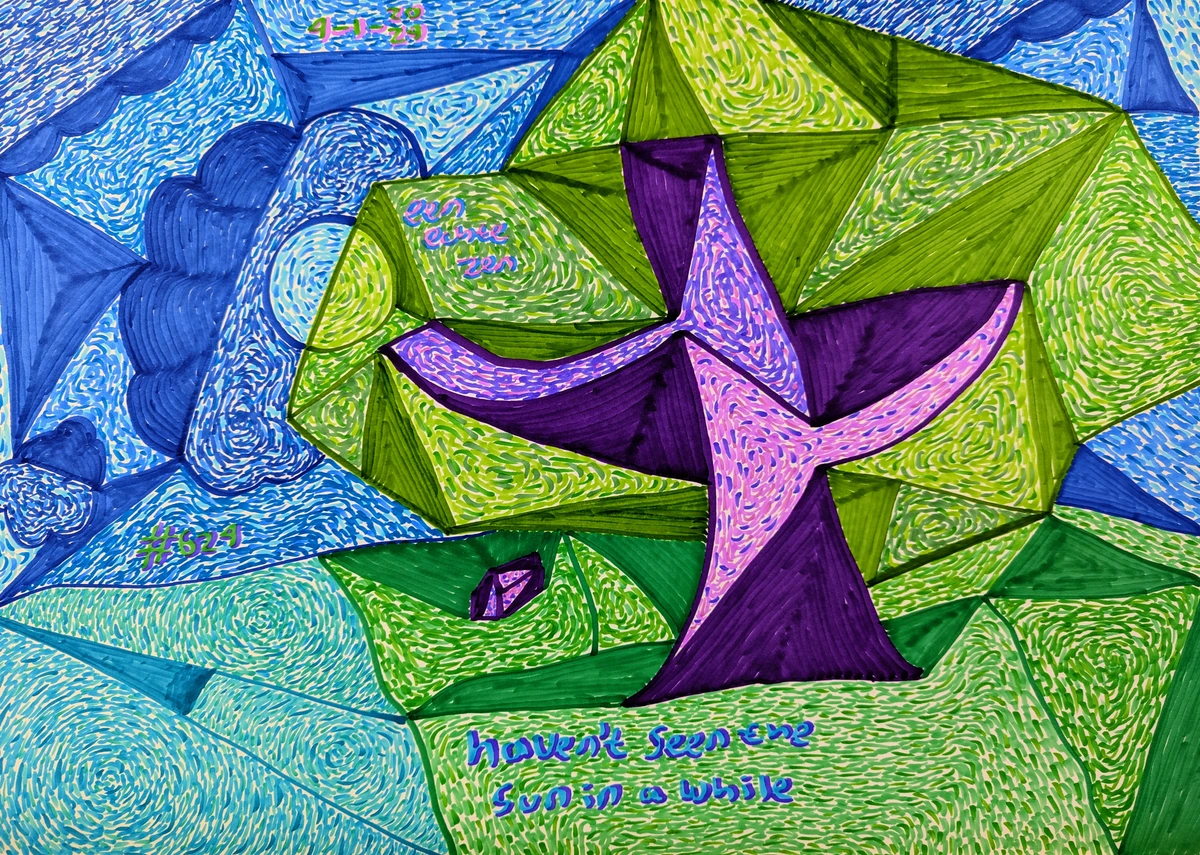
### What was the role of women in 15th-century Bruges?
In 15th-century Bruges, women, particularly those of the merchant class like Giovanna Cenami, played crucial but often distinct roles within society. While public life and commerce were largely dominated by men, women were central to the domestic sphere, managing households, raising children, and often overseeing servants. They were responsible for maintaining the family's reputation through their piety, chastity, and obedience. However, many women from merchant families also participated actively in family businesses, particularly in areas like accounting, managing ledgers, or overseeing specific aspects of trade, especially if their husbands were away on business. They were also significant patrons of art, commissioning works for devotion or for decorating their homes, contributing to the vibrant artistic economy. The Arnolfini Portrait itself, with its focus on a domestic setting, can be seen as a testament to the importance of the woman's role in establishing and maintaining the family's social and spiritual standing within the community. It's a complex picture, certainly not one of complete equality, but far from entirely marginalized, showcasing their quiet yet powerful influence.
How did patronage work in the Northern Renaissance?
Patronage in the Northern Renaissance, much like in Italy, was the lifeblood of artistic production, but it often took a slightly different form. While grand church commissions and wealthy aristocratic families were still key, the rising merchant class in prosperous cities like Bruges became increasingly important patrons. These wealthy burghers commissioned art not only for religious devotion (altarpieces for private chapels or homes) but also for secular purposes: portraits like the Arnolfini Portrait, domestic scenes, and elaborate decorative pieces that served as symbols of their wealth, social status, and personal taste. Unlike the more public, civic-focused patronage often seen in Italy, Northern patronage frequently emphasized private devotion and the display of personal affluence within the home. Artists often worked on commission, creating bespoke pieces tailored to the specific symbolic and social needs of their patrons, making them more like skilled artisans fulfilling a precise order. This intimate relationship between artist and patron, and the patron's desire for meticulously detailed and symbolically rich works, profoundly shaped the aesthetic and thematic concerns of Northern Renaissance art, pushing artists like van Eyck to new heights of realism and narrative depth. It's truly fascinating to see how economics and art were so deeply intertwined, creating masterpieces that spoke to both earthly and divine aspirations.

Where is the Arnolfini Portrait displayed?
Today, Jan van Eyck's Arnolfini Portrait is one of the most treasured masterpieces in the collection of The National Gallery in London, where it has resided since 1842. It remains a star attraction, drawing countless visitors eager to unravel its many mysteries and witness van Eyck's extraordinary artistry firsthand. It’s definitely on my list for a repeat visit!
What is unique about the mirror in the Arnolfini Portrait?
The convex mirror is a remarkable artistic and symbolic feature, a true marvel of optical realism. It reflects not only the couple from behind, allowing us to see their postures from an alternate vantage point, but also two additional figures entering the room – one of whom is famously thought to be Jan van Eyck himself, explicitly acting as a witness. This intricate detail, combined with the tiny, exquisite scenes from the Passion of Christ (including the Crucifixion and Resurrection) meticulously rendered in its frame, elevates the painting to a form of legal and spiritual documentation, a 'painting within a painting' with deep layers of meaning. It also brilliantly demonstrates van Eyck's incredible skill in capturing complex spatial relationships, his innovative use of optical effects, and his pioneering understanding of /finder/page/definitive-guide-to-perspective-in-art, essentially pulling us, the viewers, into the painting as if we're standing right there in the room alongside the artist. It's a groundbreaking moment in art history for its audacious visual trickery and intellectual depth, functioning as a kind of "meta-commentary" on the act of painting itself, and a true testament to van Eyck's genius in both technical execution and conceptual complexity. It’s a testament to his unparalleled mastery of /finder/page/definitive-guide-to-perspective-in-art and optical effects, a true hallmark of his technical brilliance.

A Masterpiece That Keeps Giving: My Final Thoughts
The Arnolfini Portrait, for all its intricate symbolism and profound historical context, remains a painting that speaks across centuries with an almost uncanny clarity. It’s a testament to van Eyck's unparalleled skill, yes, but also to the enduring human desire to imbue our lives, our objects, and our significant moments with deeper meaning. It reminds me that whether you're creating a contemporary abstract piece or admiring a Renaissance masterwork, there's always an underlying narrative, a hidden language waiting to be discovered, a story longing to be told. The genius lies in the intention, the execution, and the viewer's journey of uncovering.
This incredible work consistently makes me think about my own artistic journey – how I often start with a concept, a raw feeling, and then let the process guide me, much like van Eyck carefully constructed this world, brick by symbolic brick. His ability to imbue every single detail with such precise intention, creating a rich, layered tapestry of meaning that continues to unfold after almost 600 years, is something I constantly strive for in my own contemporary, often abstract, works. I truly believe that art, whether centuries old or freshly created in a modern studio, offers a boundless realm for discovery, personal interpretation, and a profound connection to the human experience. It's why I dedicate myself to exploring the expressive power of color and form, aiming to create something that, like van Eyck's masterpiece, invites viewers into a deeper conversation, a personal decoding of meaning, reflecting my journey in abstract art—where every brushstroke is a deliberate choice, and every color carries emotional weight, much like van Eyck’s symbolic narratives.
If you're as inspired as I am by how art can capture so much, and you're curious about exploring different layers of meaning through a modern, abstract lens, perhaps take a moment to browse some of my own work at /buy. After all, the conversation around art, its meanings, and its impact, is never truly finished; it simply evolves with each new viewer and each passing generation.
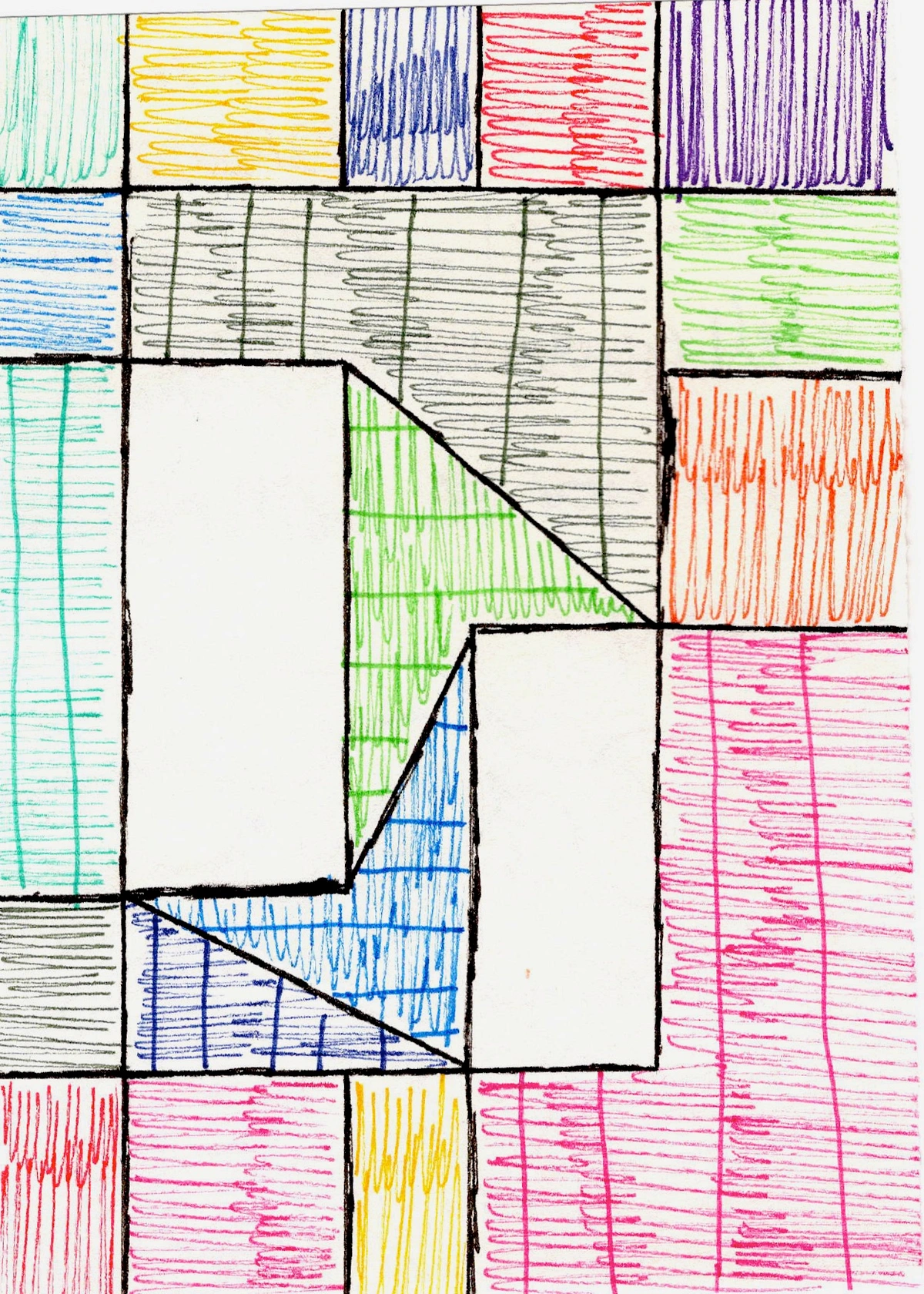
What are your thoughts on the Arnolfini Portrait? What other hidden meanings do you see in this incredible painting? What resonates with you from van Eyck’s meticulously crafted world, or perhaps from your own journey with art, whether you're a seasoned collector or just starting to explore? I’d absolutely love to hear it. Have you had a similar 'aha!' moment with another artwork that just wouldn't let you go? Share your insights, because every perspective adds a new dimension to our collective understanding of art, making the conversation richer and more profound for all of us.


